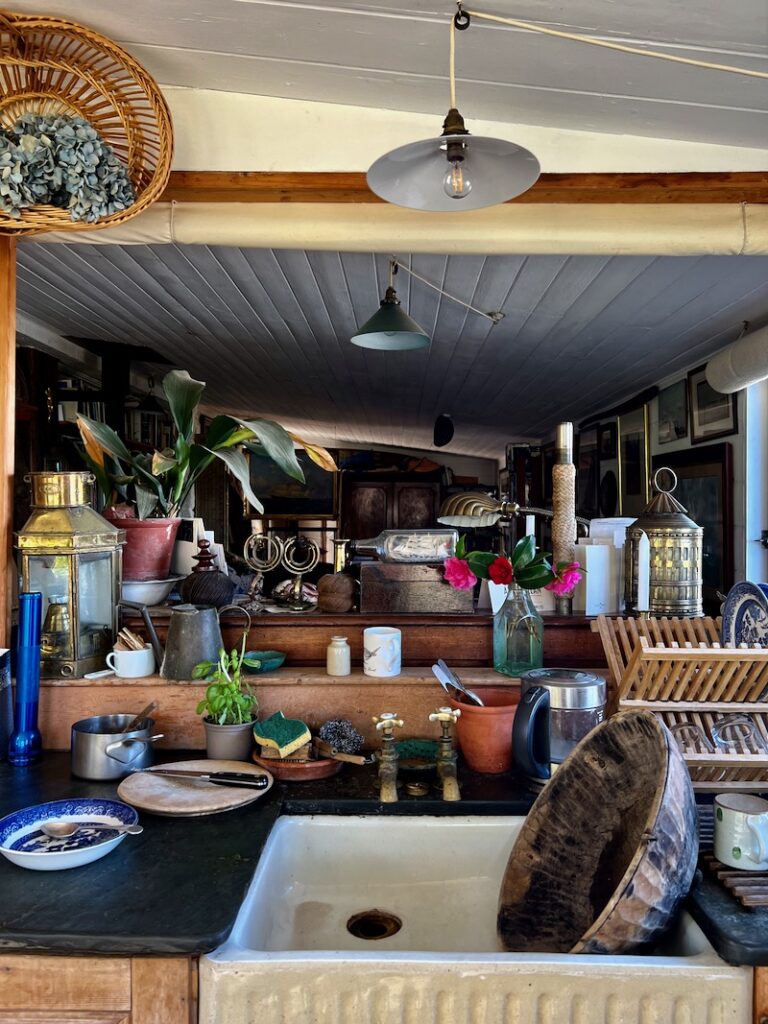
This is the house that Greg Powlesland built – artist, designer, maker, boat-builder and reclaimer, repairer and re-purposer of old things – boats, vehicles, architectural salvage and industrial materials. He shares it with his son Rupert, and his wife Katie Fontana, (Creative Director of the company Plain English that she co-founded in 1992).
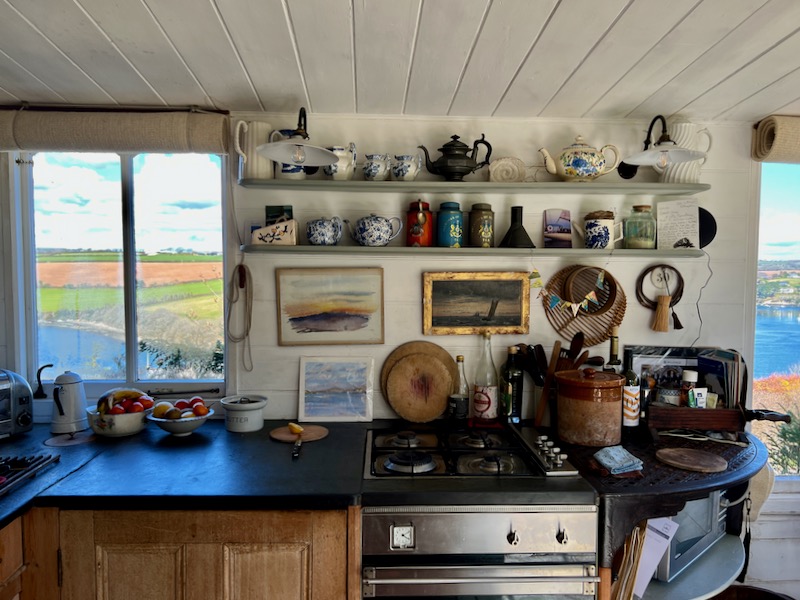
‘This is where we live. The kitchen end of the long room, the end for eating .The other end is for living and for sleeping , divided up with furniture. The cupboards are made from old doors’
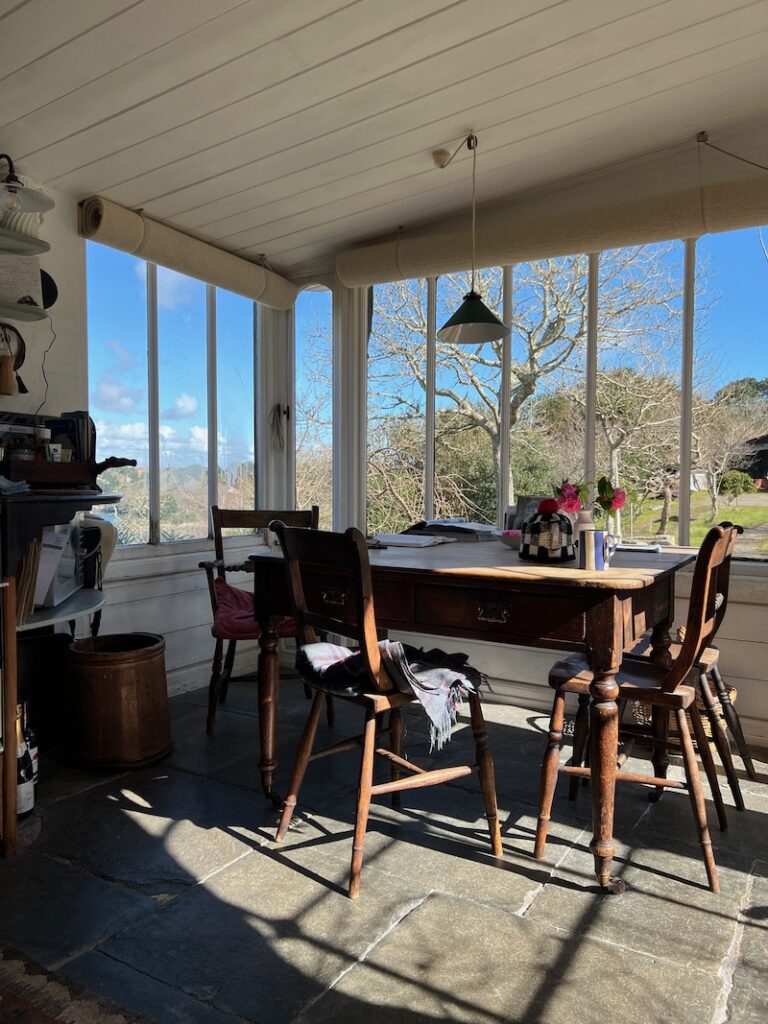
The Helford River describes a wide Amazonian meander below, the kitchen windows frame this watery panorama in sensurround – like a cinema screen. Greg grew up close to water and boats, on the Essex coast, his engineer father taught him about making things.
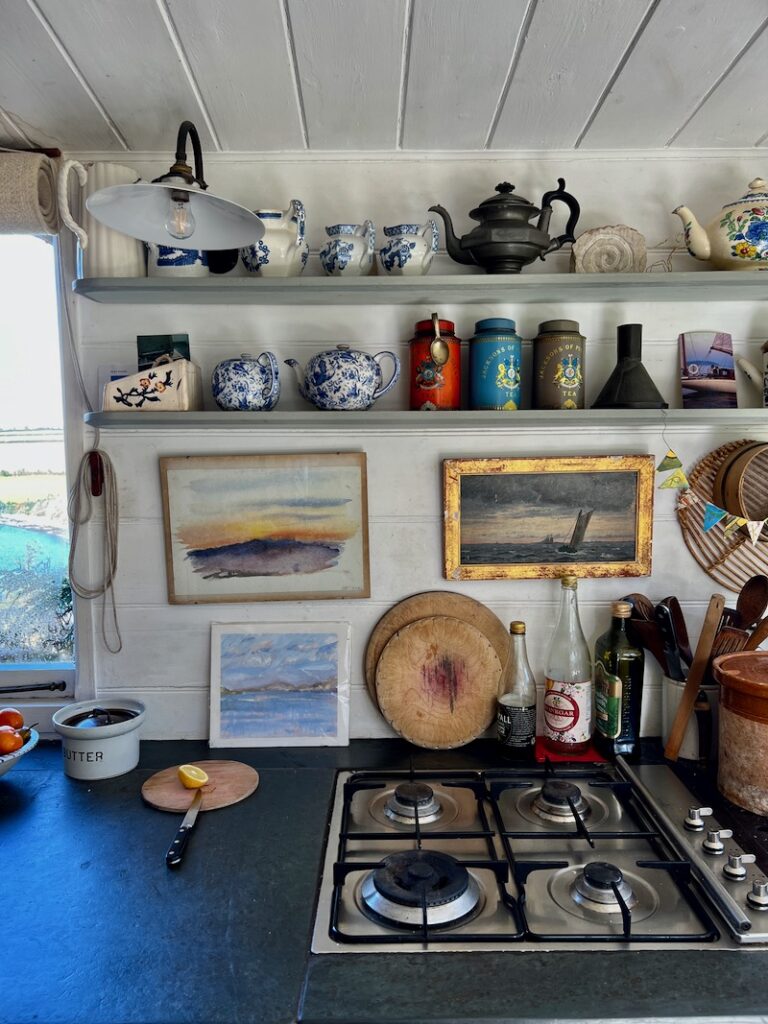
‘Frenchman’s Creek, the picture on the left, done by a sailor who took up painting. Me and Katie happened to meet in a boatyard.’
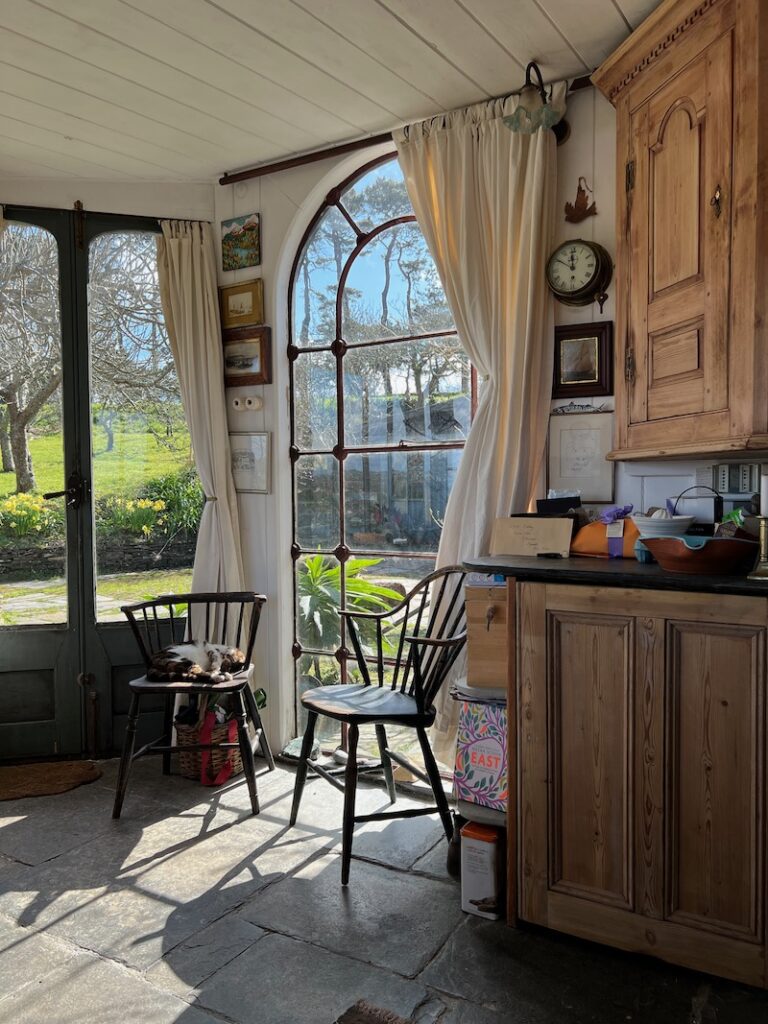
‘Aesthetic disputes ? Just a little… We are both very similar but I really cant stand those little stools with 3 legs and I’m not keen on Ercol at all. The huge window is from Heritage Reclamation near Ipswich, from an industrial building – a mill or perhaps an engine house?’
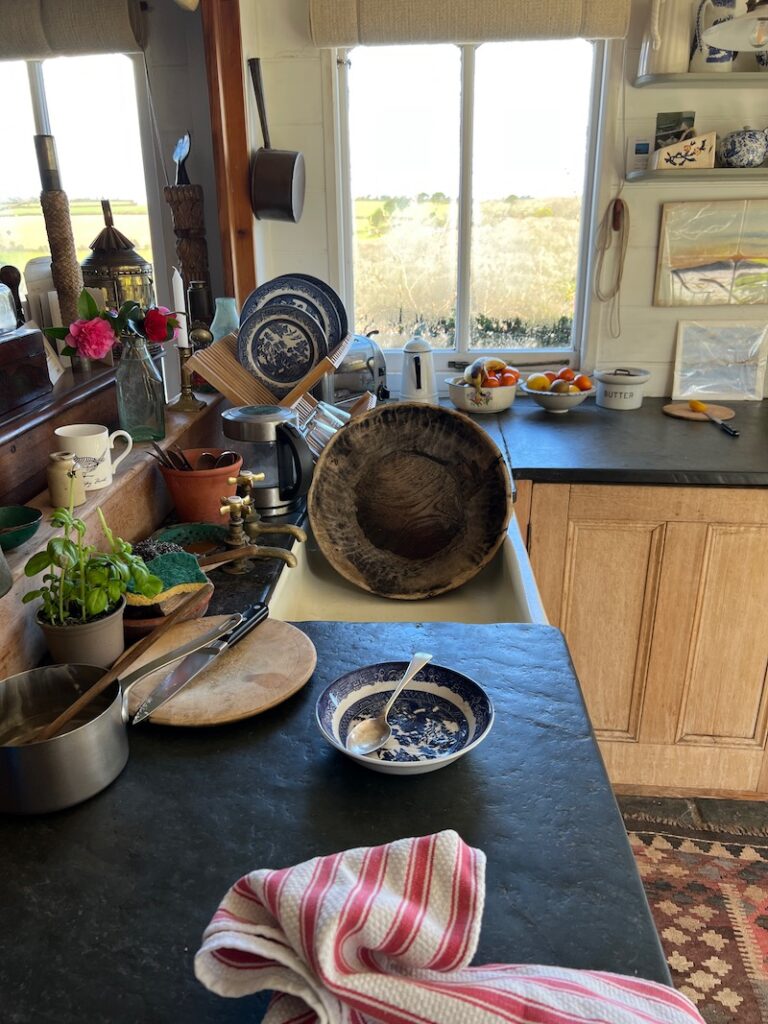
‘A Sycamore washing up bowl I made. Old slate tops and counters – I bought slate all over the place’
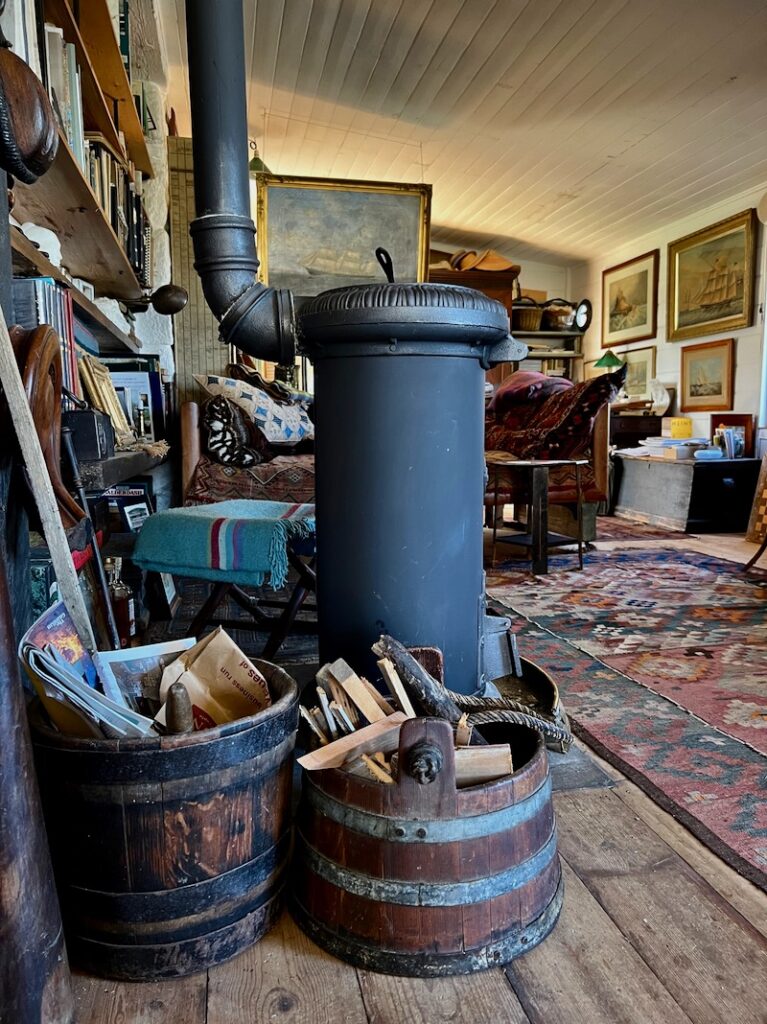
Middle of the Long Room with collected kindling
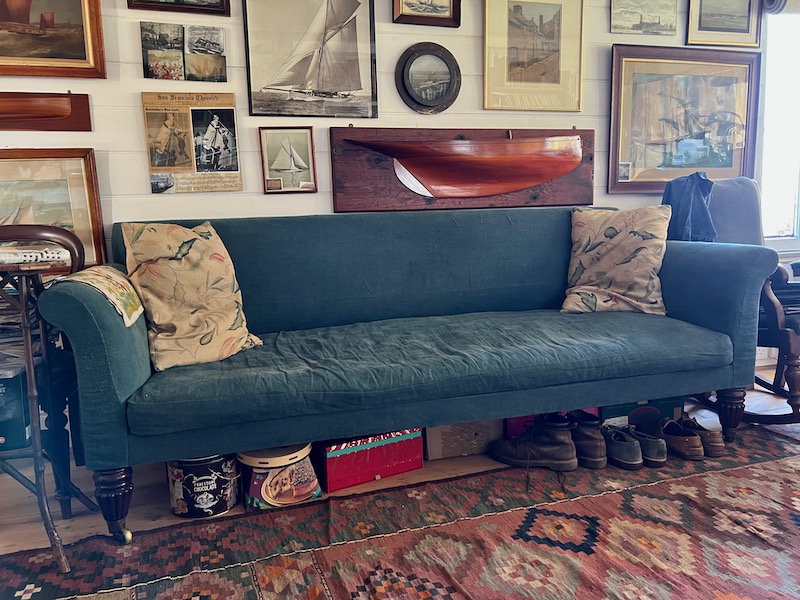
‘Katie got the long long sofa’
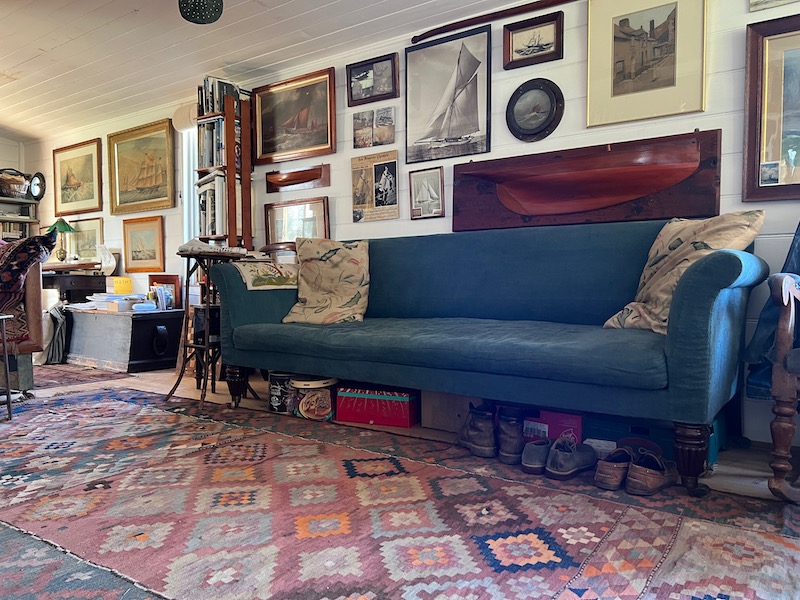
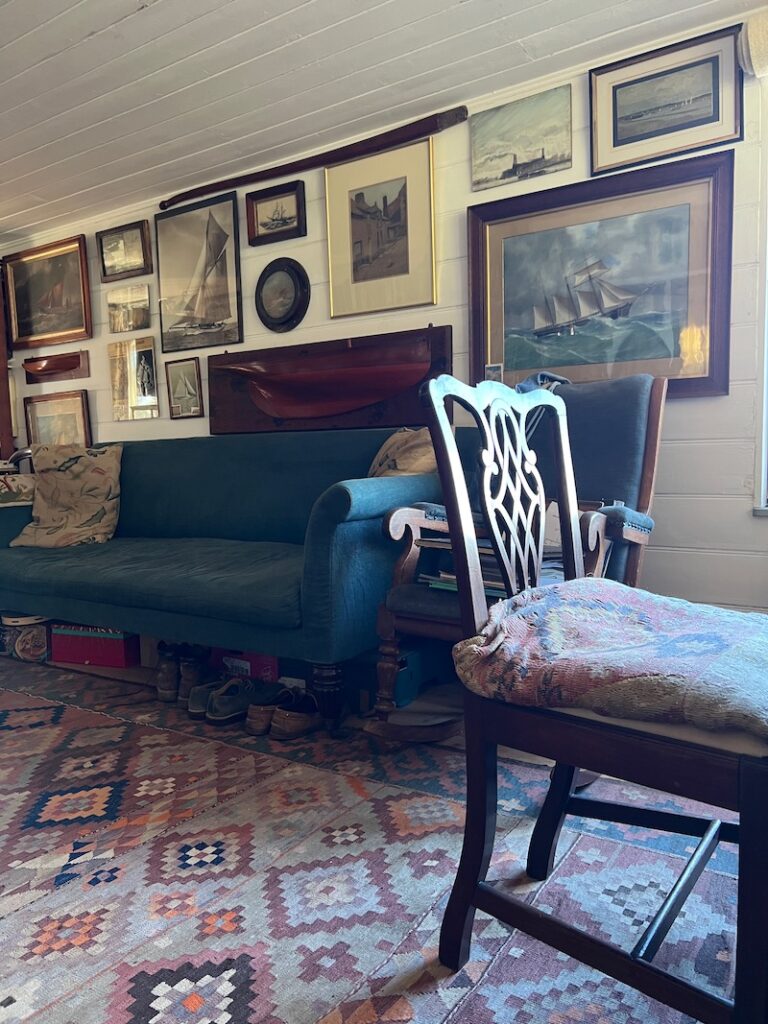
‘One of a set of Georgian chairs from Falmouth’
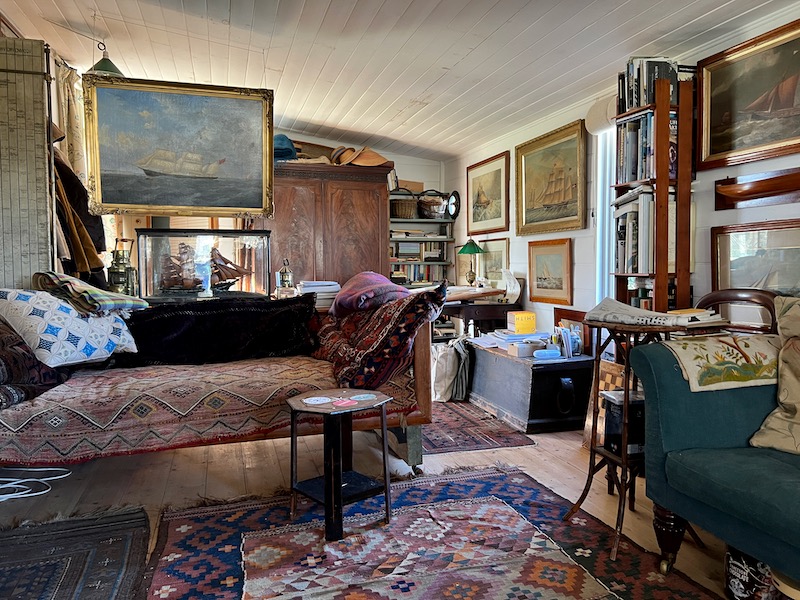
Sleeping and ablutions beyond the mahogany cupboard and room divider
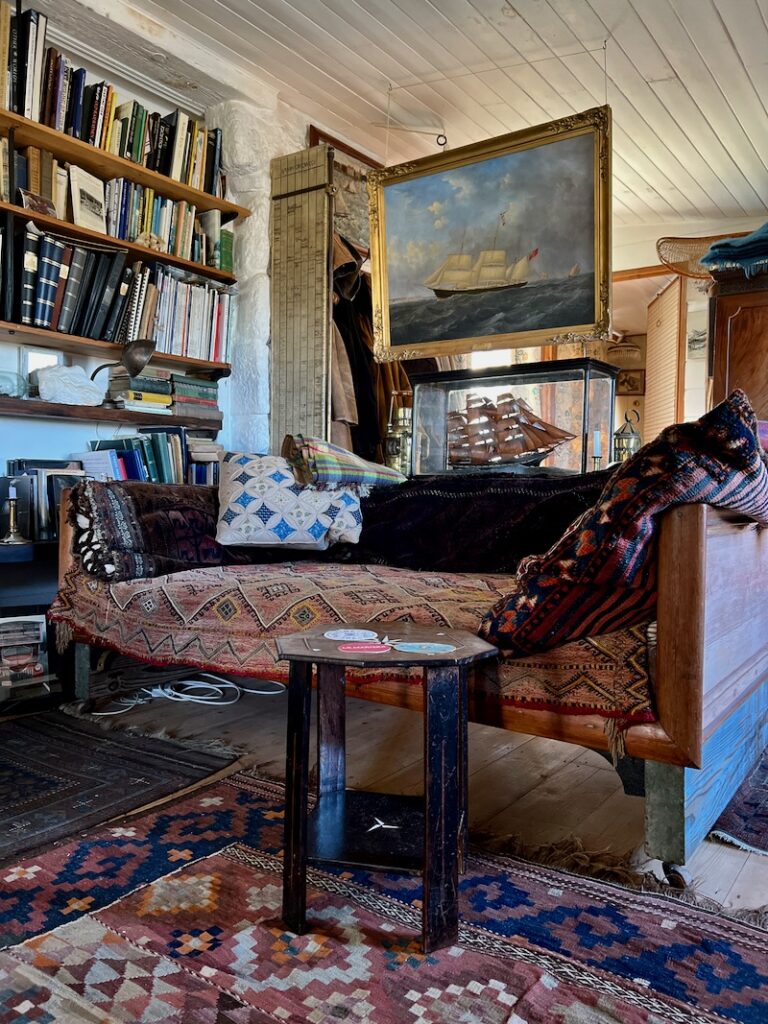
‘I made this sofa, with railings from a staircase and pieces of panelling and lumps of wood – But Its covered in squashy things’
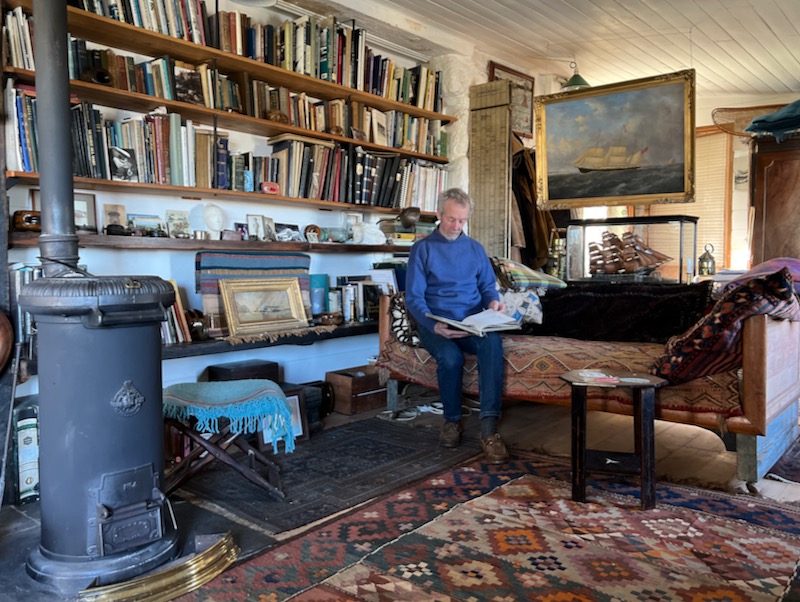
‘My nautical and art library ‘ – ( Greg leafing through sketchbooks of his drawings from the 1970s when he lived for a time in Alaska, Northern Canada.)
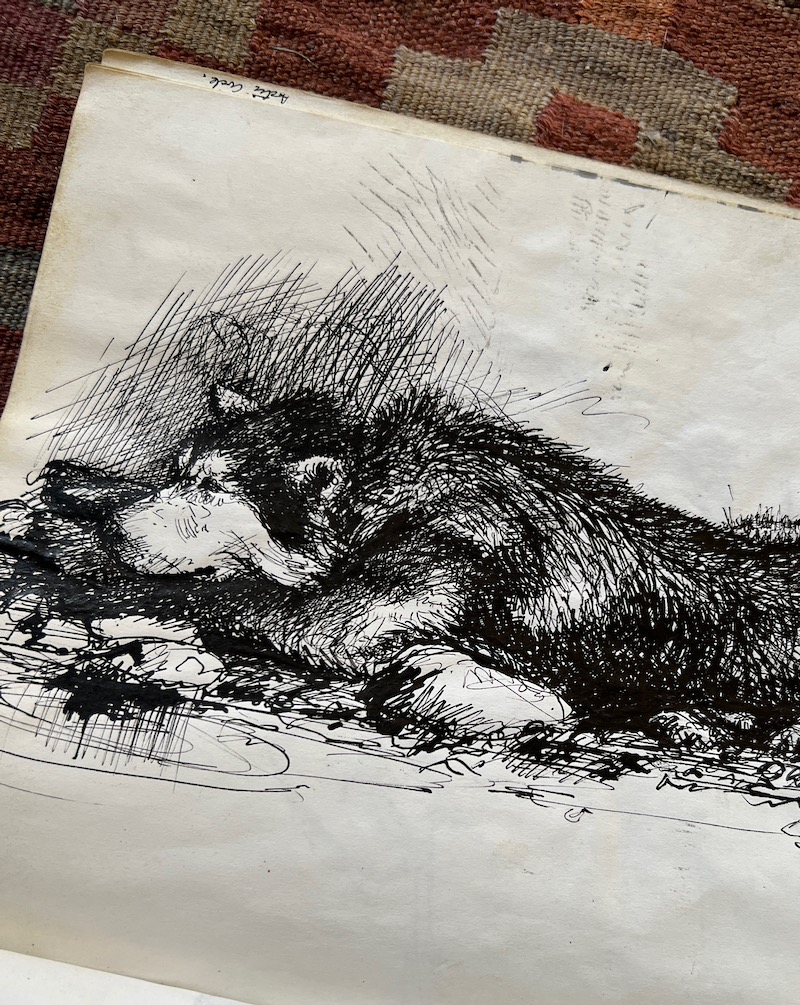
‘Teddy – that was my dog. She was half wolf and half Malanute. She was huge. She slept outside in 60 degrees below zero.’
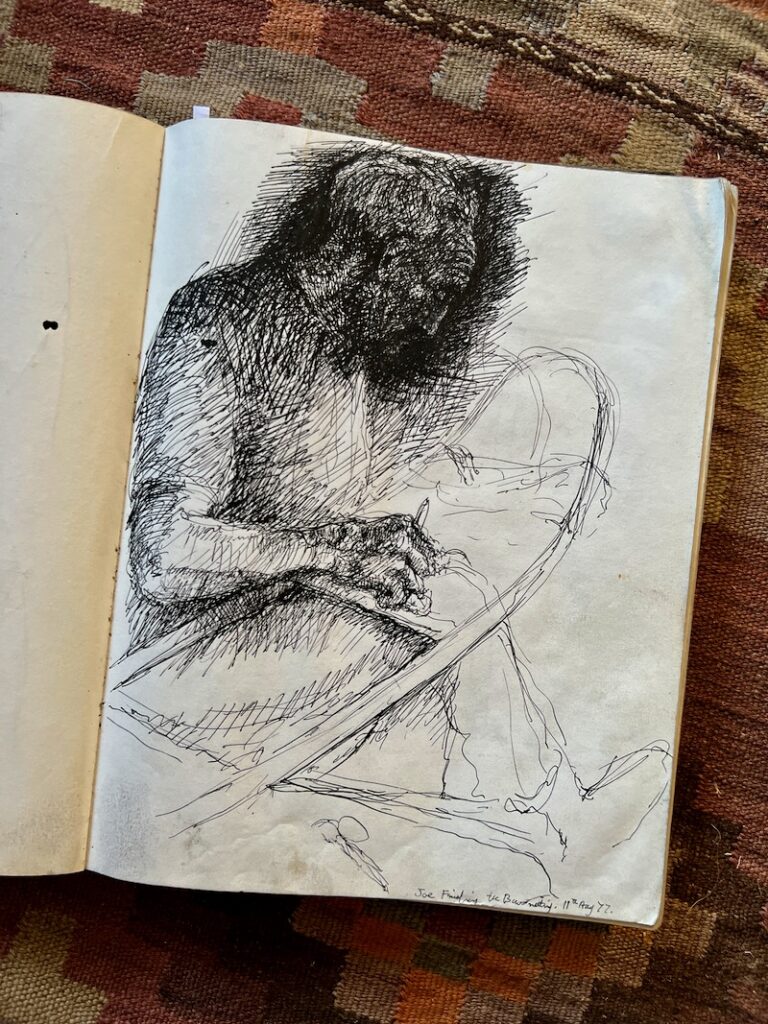
‘That’s Joe Henry, August 1977, making Fort Mcpherson snowshoes for use when its 40 degrees below zero, the only way you could walk on the snow.’
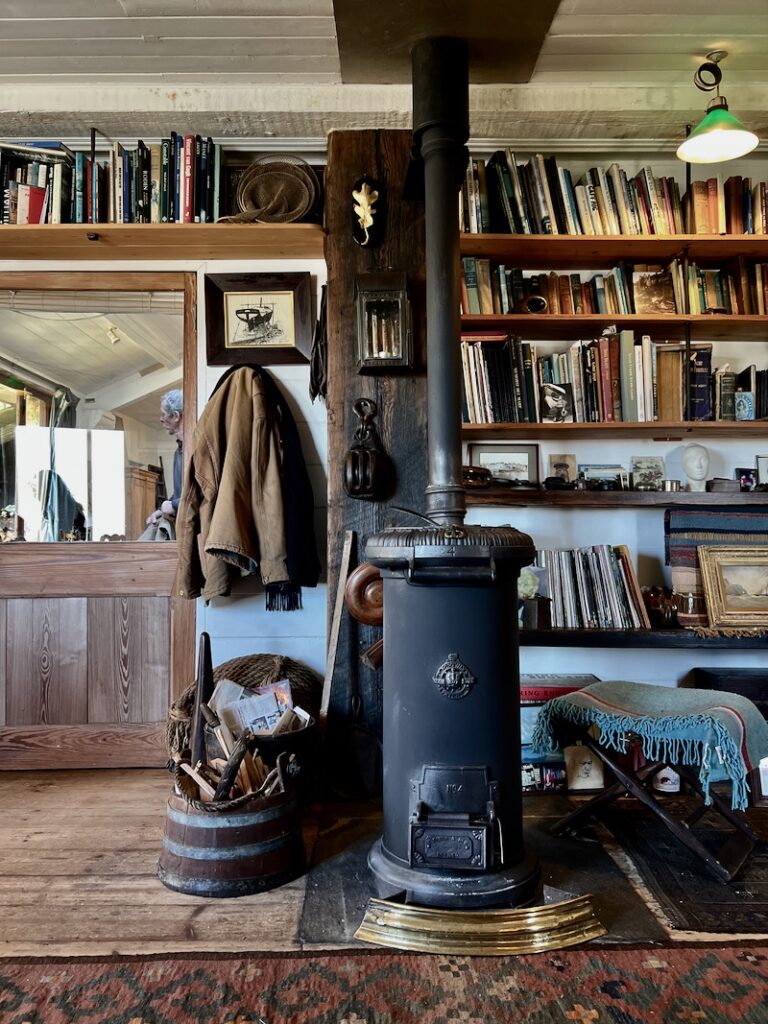
another tortoise stove, and the door to the studio
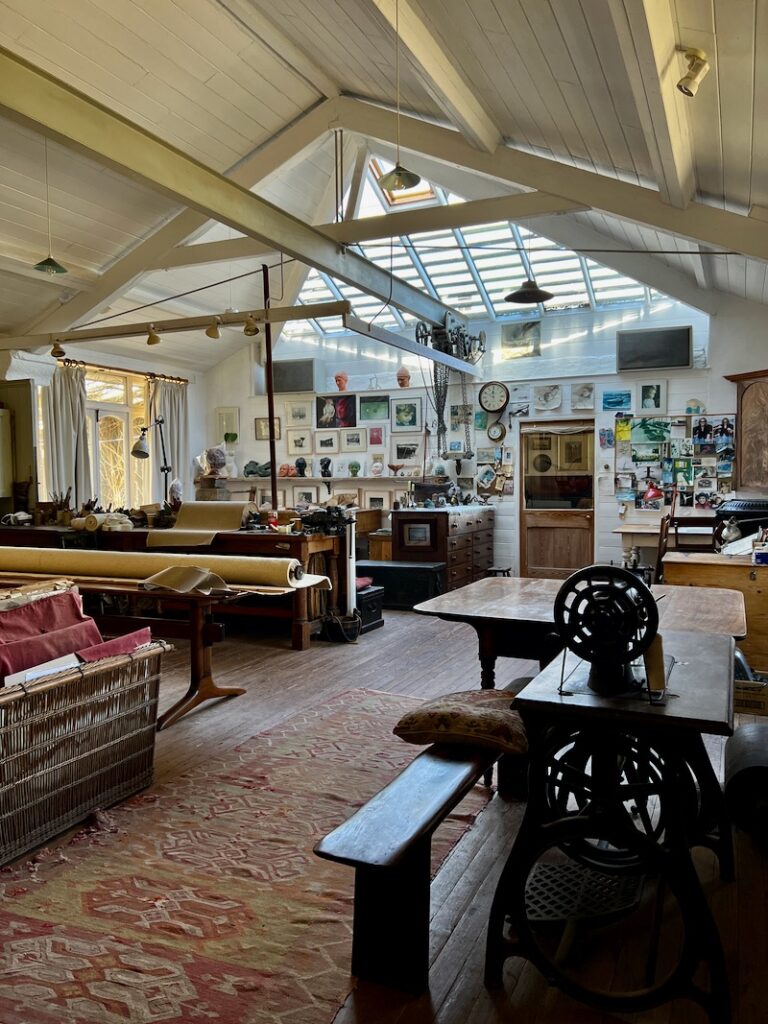
The studio. ‘A table I made when I was teaching at the John Makepeace School at Parnham House, a seven foot long dining table of yew, rosewood and ebony. A sail-makers sewing machine that belonged to Hector Barr from Wivenhoe, he was 90 when I met him and bought all his sailmakers tools. I’ve done a lot of sewing over the years, I made a wonderful smock out of denim but I lost it…’
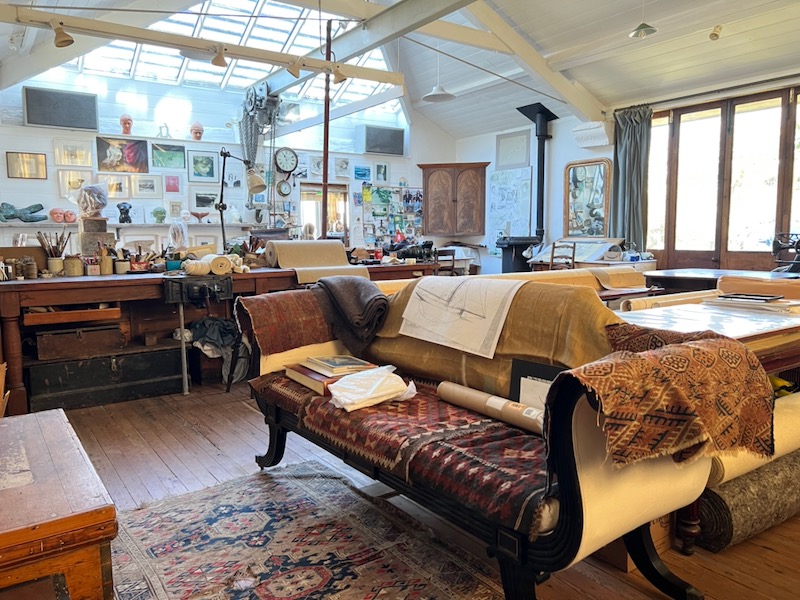
‘The design of studio ? – It’s got rods which take the weight of the roof and brace it to get more height. The roof is carrying that beam, not the other way around. The Regency rosewood sofa – that’s Katie’s. It’s a beauty. And rug wrecks from a rug dealer with big holes in them – that was an exquisite rug!’
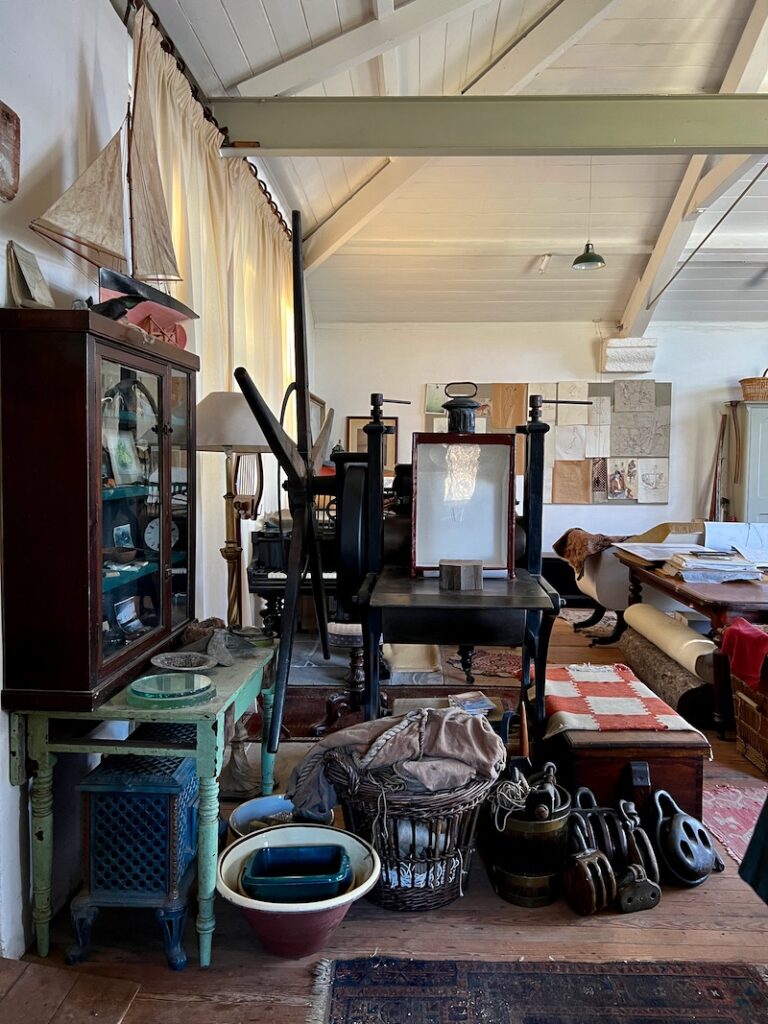
more. Beauty AND utility
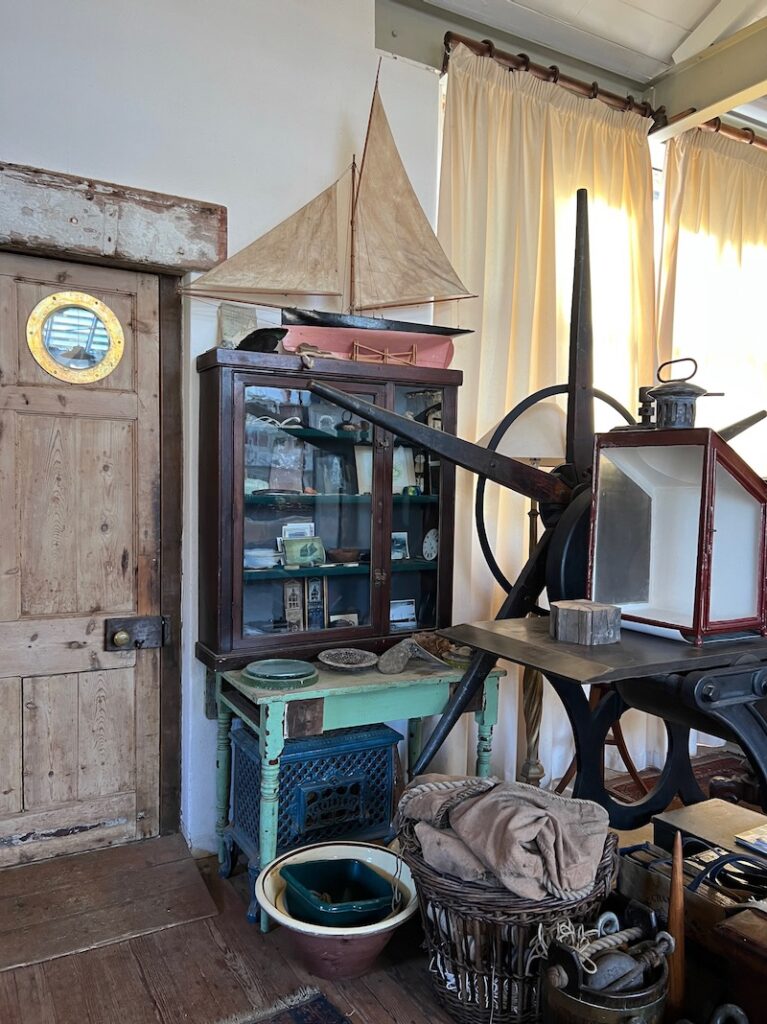
A cabinet of curiosities
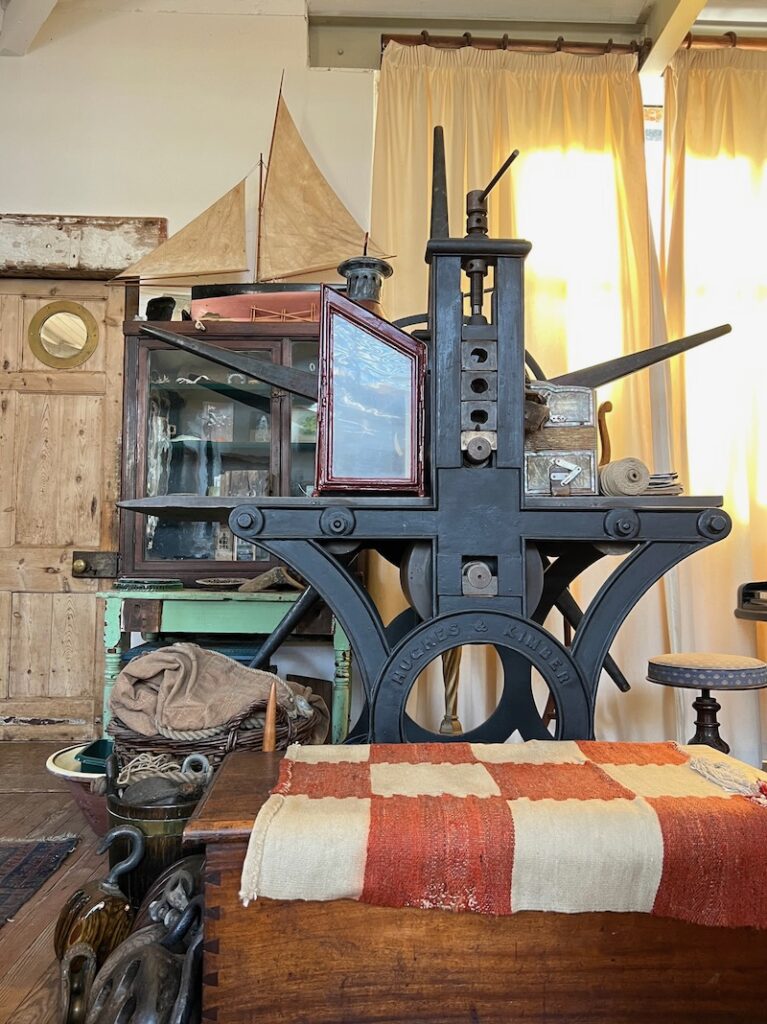
‘An etching press, the same kind that Whistler used . An old sea chest, a rug my brother gave me when I was a teenager…’
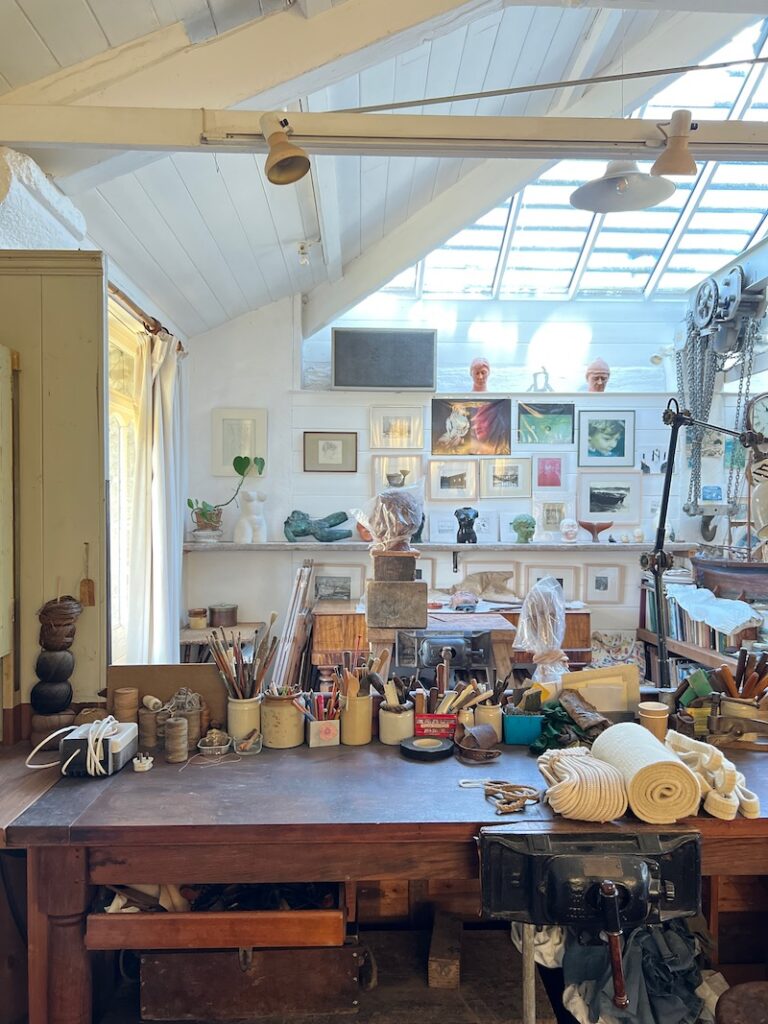
‘Yurt material for making the blinds – it’s felt, basically…’
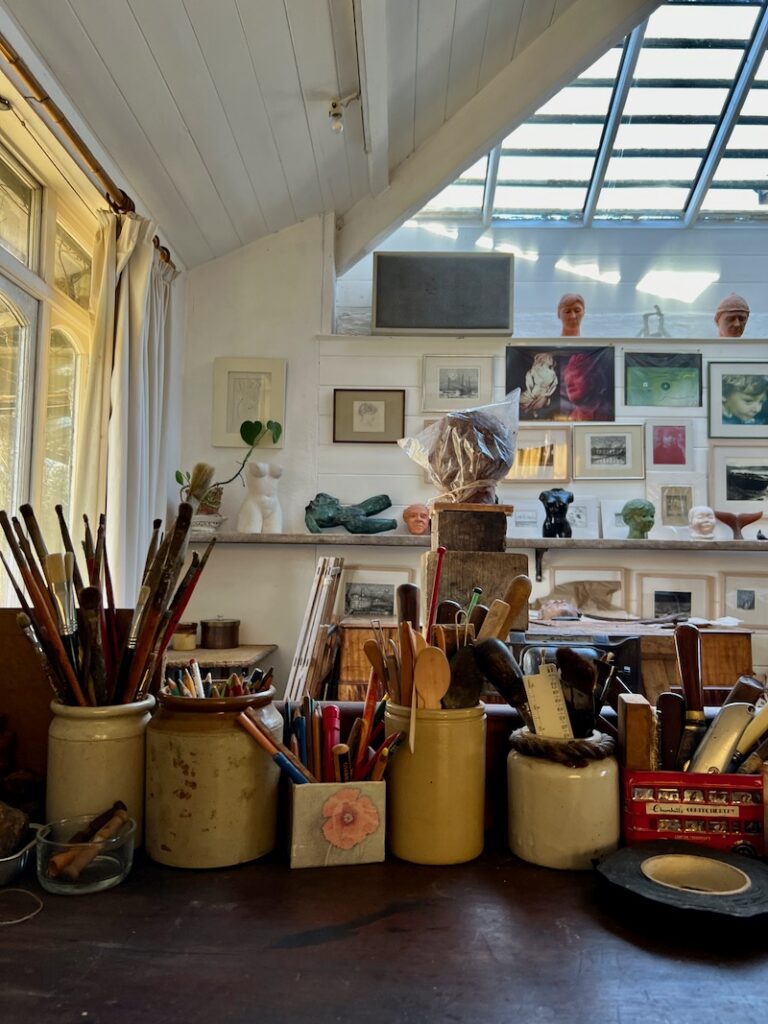
Greg studied sculpture and drawing at St Martin’s and Chelsea College of Art.
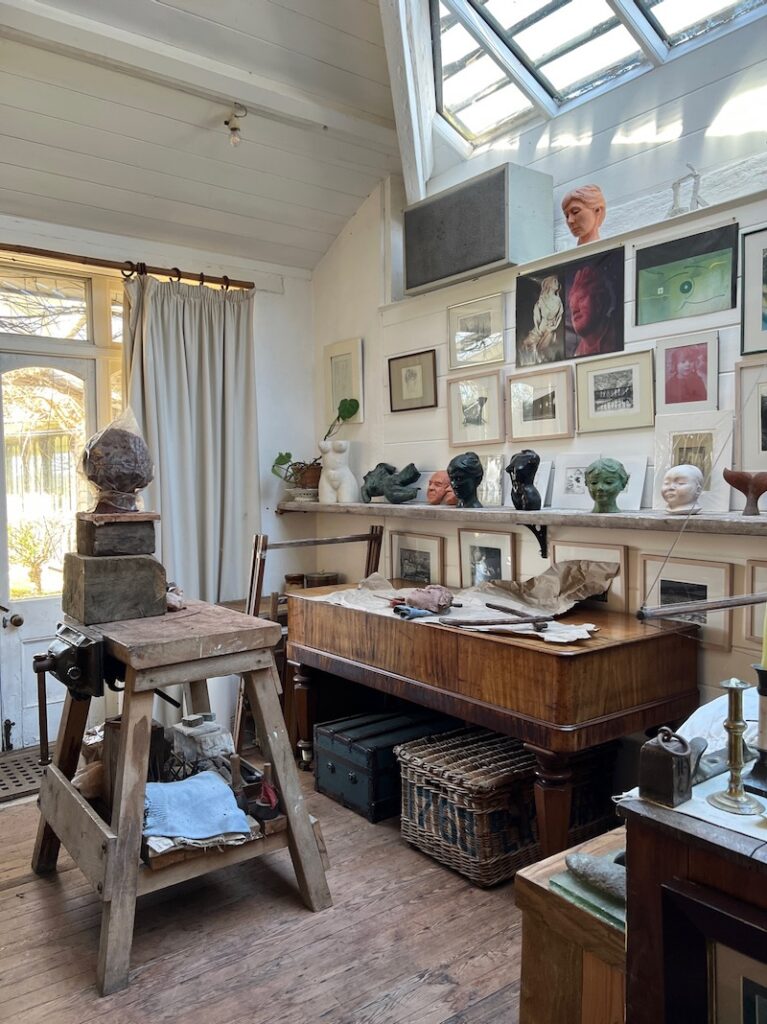
‘Sculpture. The head of my son Rupert – that’s still ongoing’
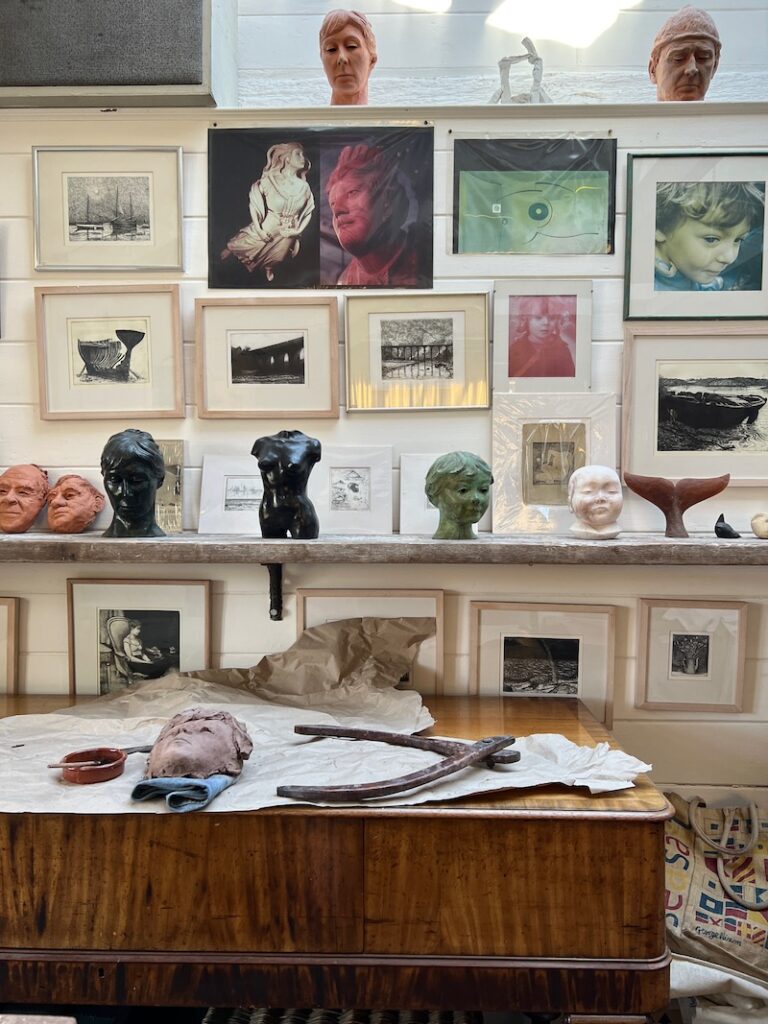
‘The alabaster head of Rupert at one year old ,and at 3 years old , Maria ‘s head and a torso. The whale’s tail is a wax, ready for casting. And a Wren – I made an edition of 16 and sold them all’
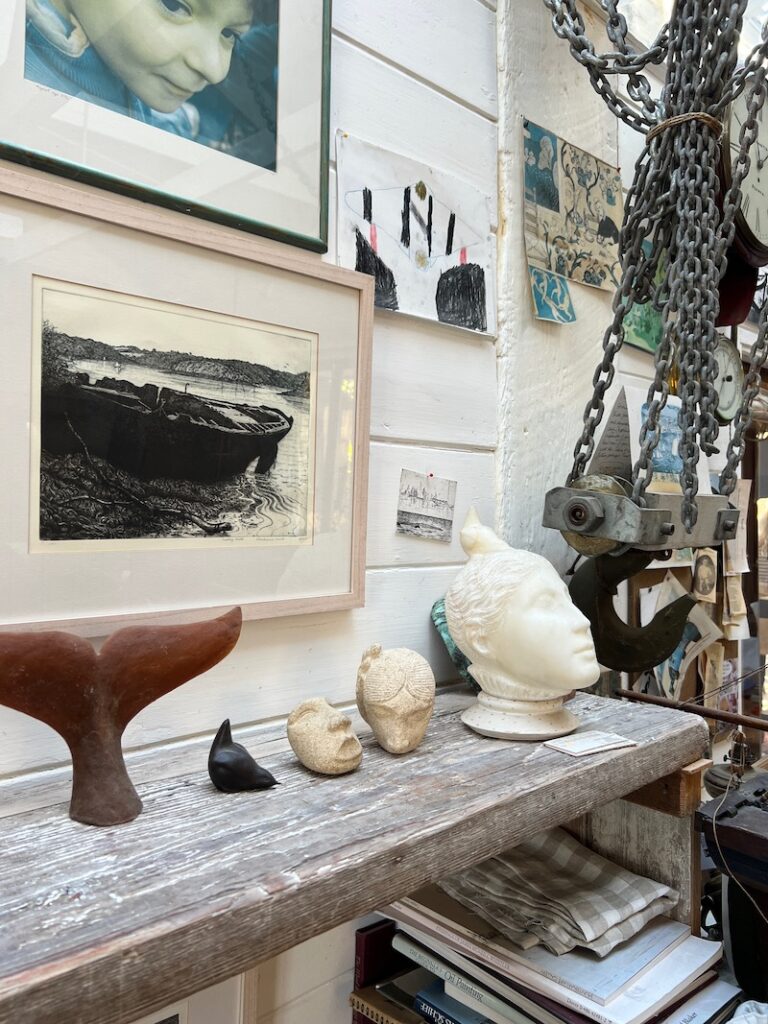
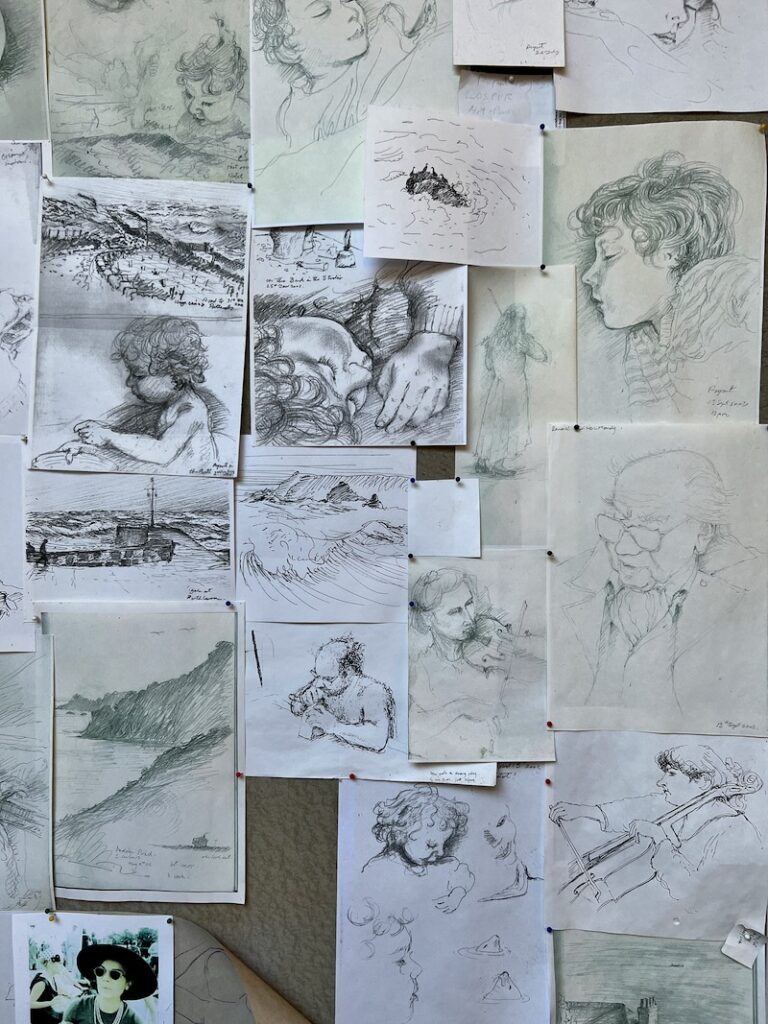
‘pencil studies – lots of Rupert’
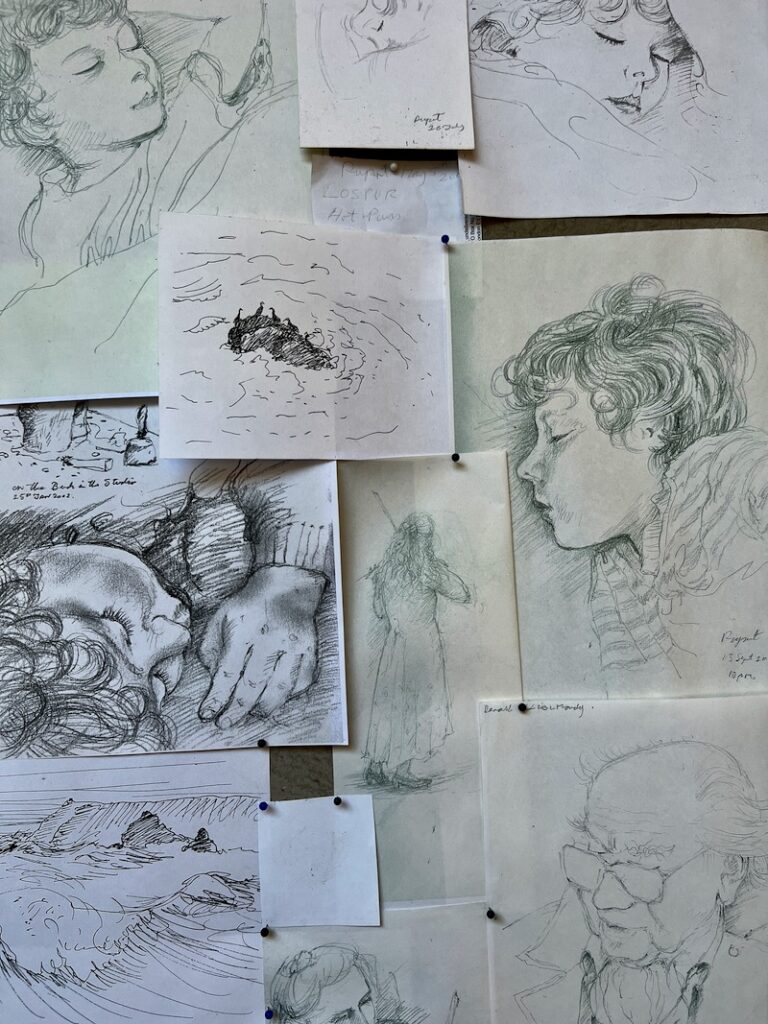
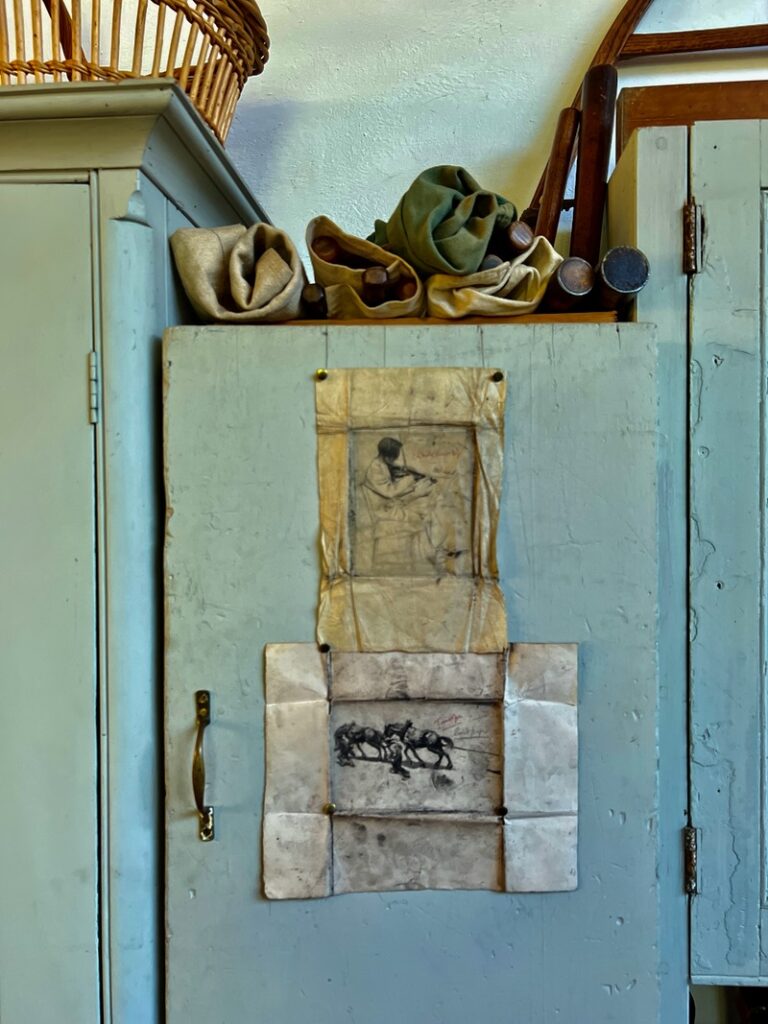
‘Horses – proof drawings from a set of etching plates that Harry Ecclestone, a great friend of my father’s, left in his studio when he died. A. pale blue paint that’s just a primer from the local builders – it was just luck! The tool cupboard ? I made while teaching at the Makepeace School.at Parnham. My students? There was David Lindley, Tom Clark…’
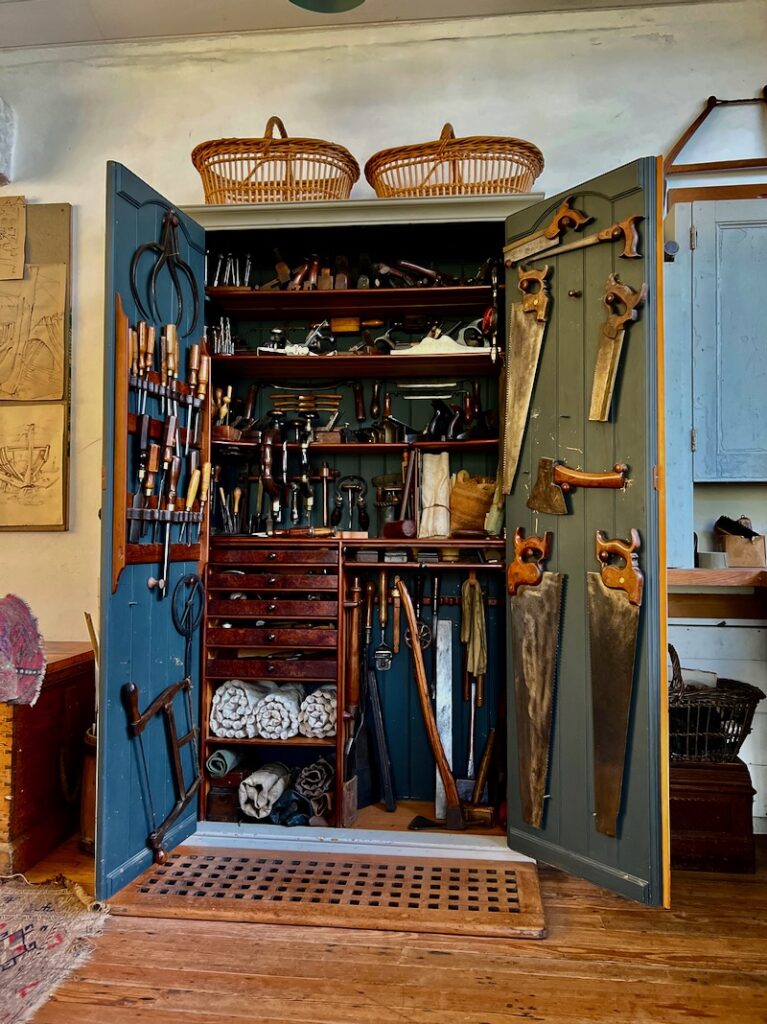
‘It’s just pine and yew inside. The students had their tools on plywood, I told them, ‘If your’e going to make exquisite furniture, you need to present yourself properly.”
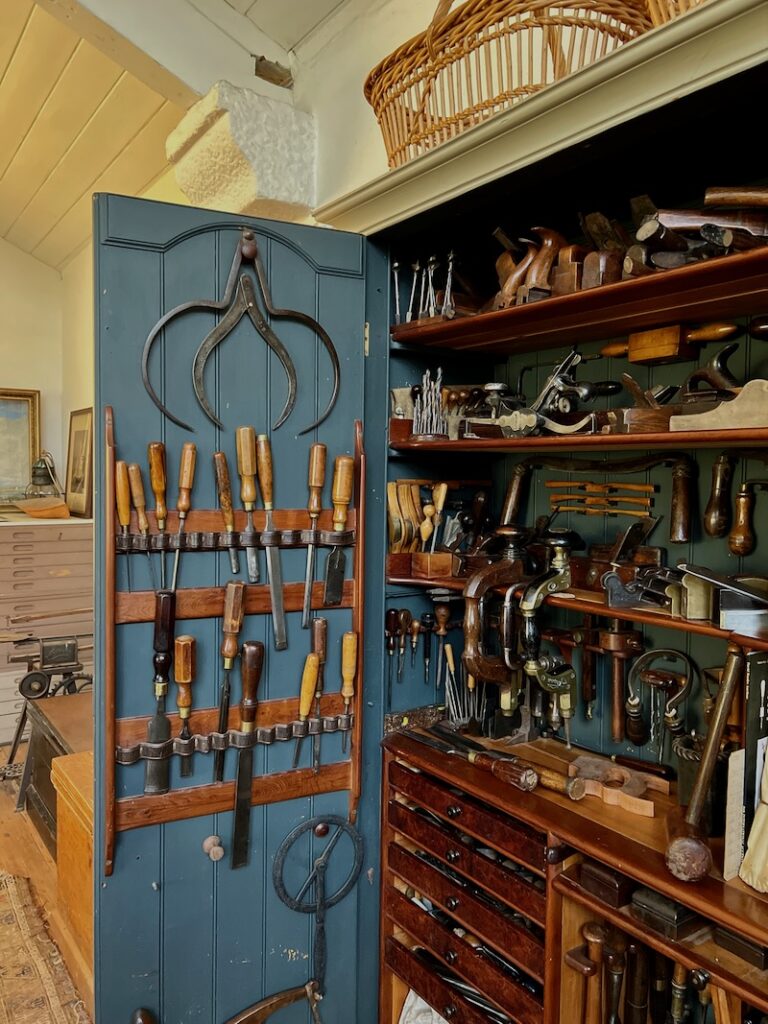
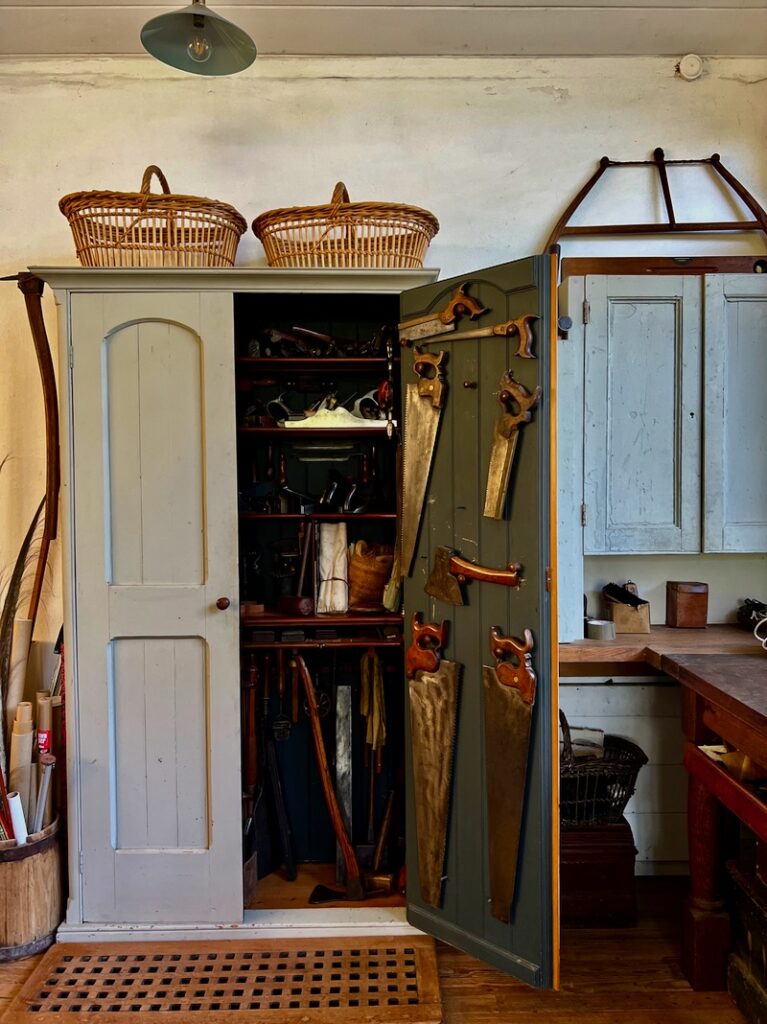
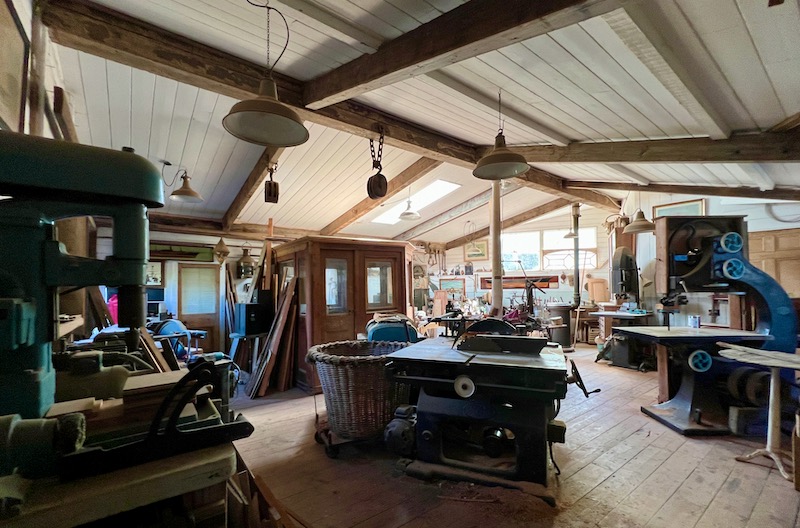
‘That’s the workshop. The woodwork shop.’
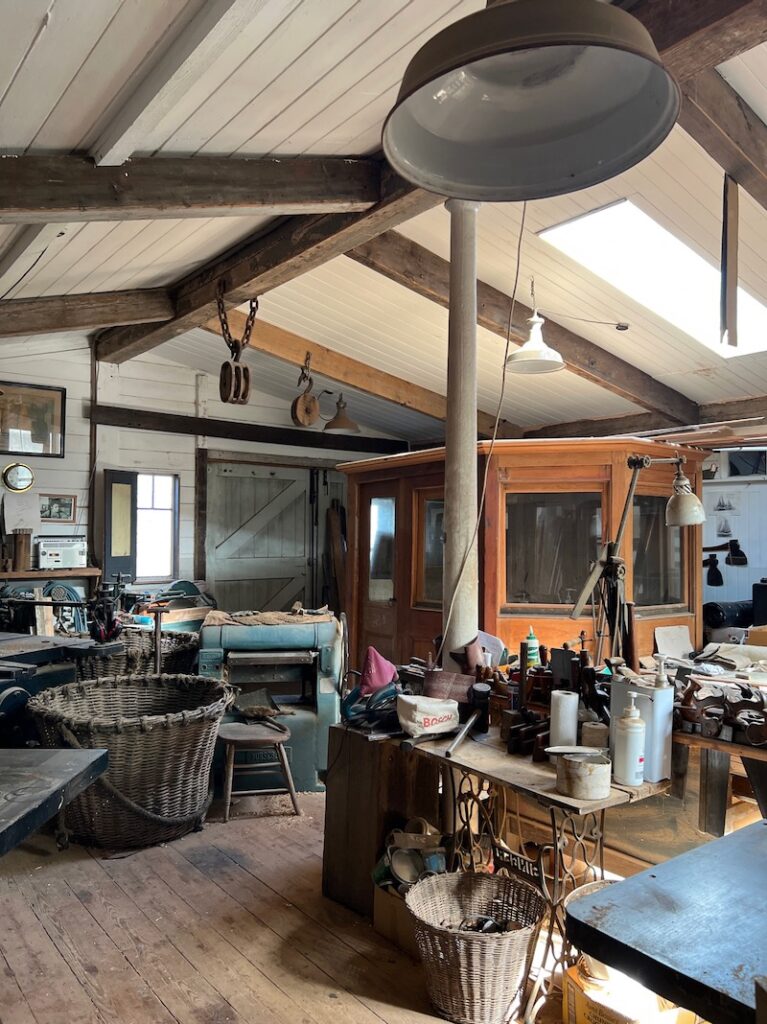
‘At the back there’s this deckhouse of the steam ship, the Celt, from 1870-something. It was left in a car park in Bude, some one couldn’t get it into their garden and just left it. I only had a Morris Minor pickup but I managed to get the whole thing onto it. And I rebuilt it.’ After art school Greg served as a rigger, crewing on the voyage to San Francisco on a tall ship modelled on the Elizabethan Golden Hinde, then worked as a ship’s Carpenter in San Francisco.
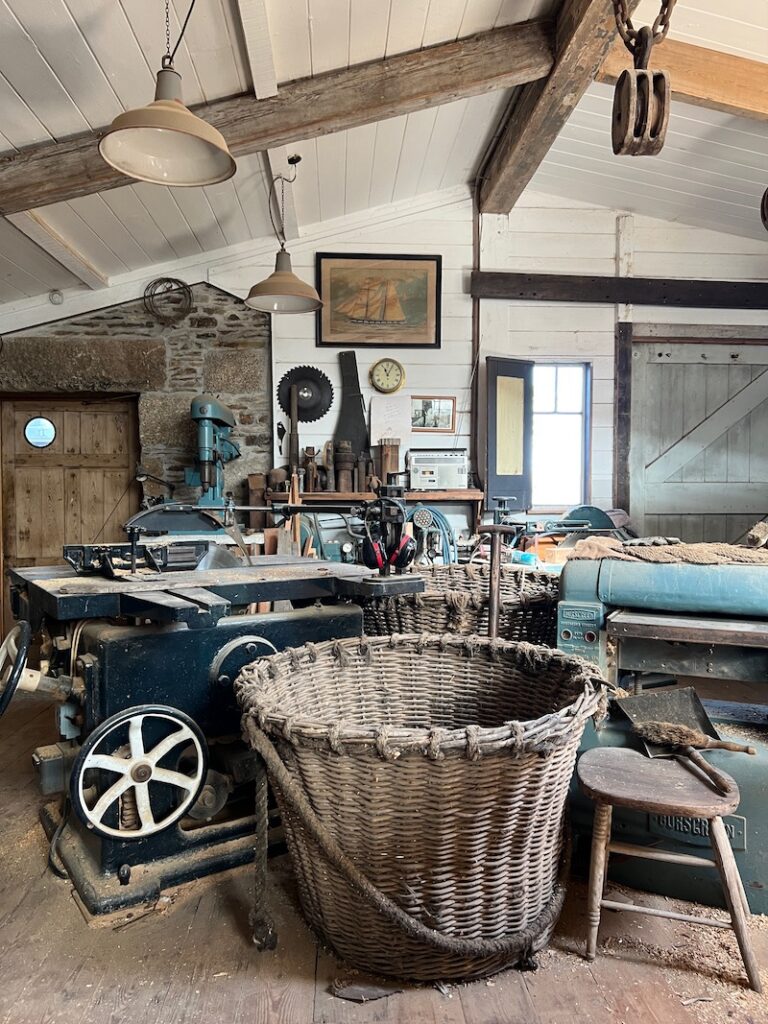
‘These are the tools I use. The massive basket from Charlestown was used for loading barges with coal, made of cane, made to last. And I got the crane that lifted them – a rare maritime thing’
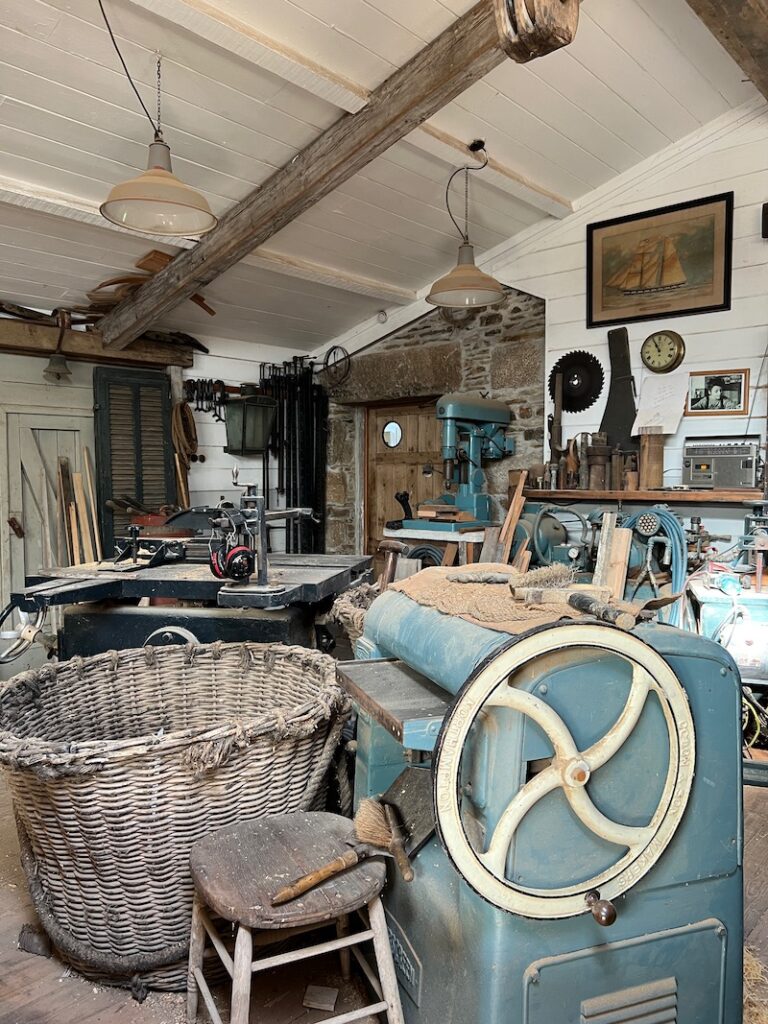
‘That’s a machine that planes planks that have been rough sawn, it was fifty quid from Trago Mills, they were chucking it out!’
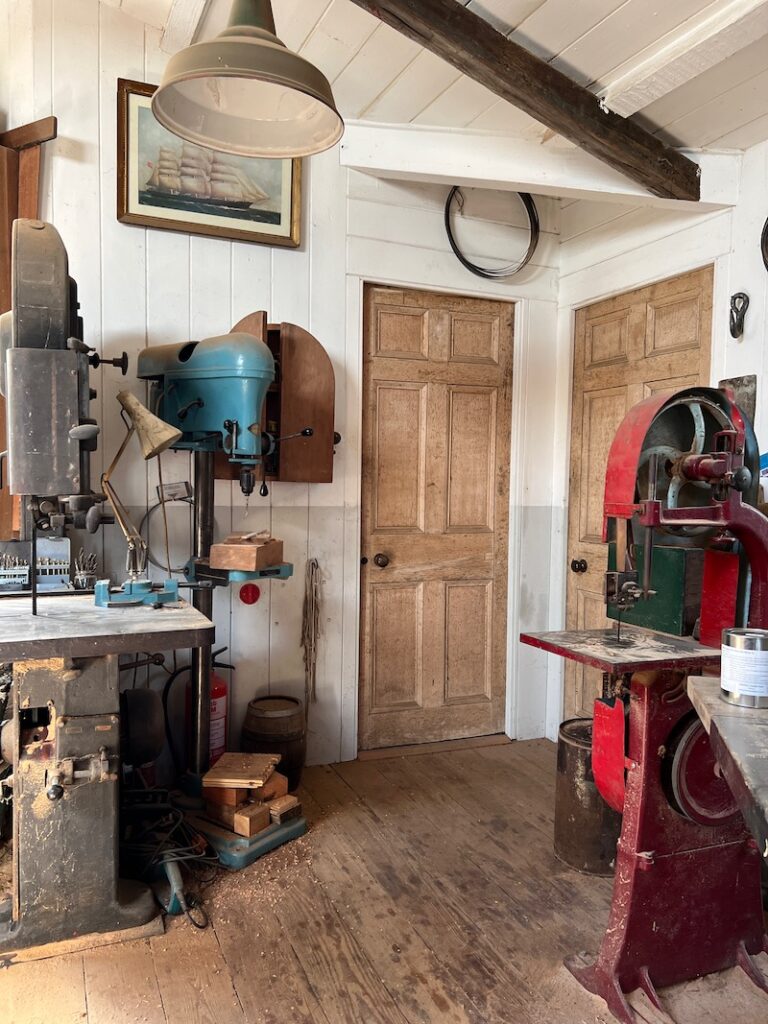
‘‘The blue pillar drill? It belonged to a neighbour of mine, Mr. Coombes, when I lived in Forder,near Saltash in the 1980s. He was an incredible character, an engineer behind enemy lines during the Second World War, he had an incredible collection of electrical equipment, but he was getting very elderly. He had four or five Rolls Royces and two Bentleys – I did a drawing of him in the workshop next to his 1929 Phantom Rolls Royce, which he had turned into a pick-up’! The red one is a little old fashioned hobby bandsaw that a friend gave me, nothing special but does the job ‘
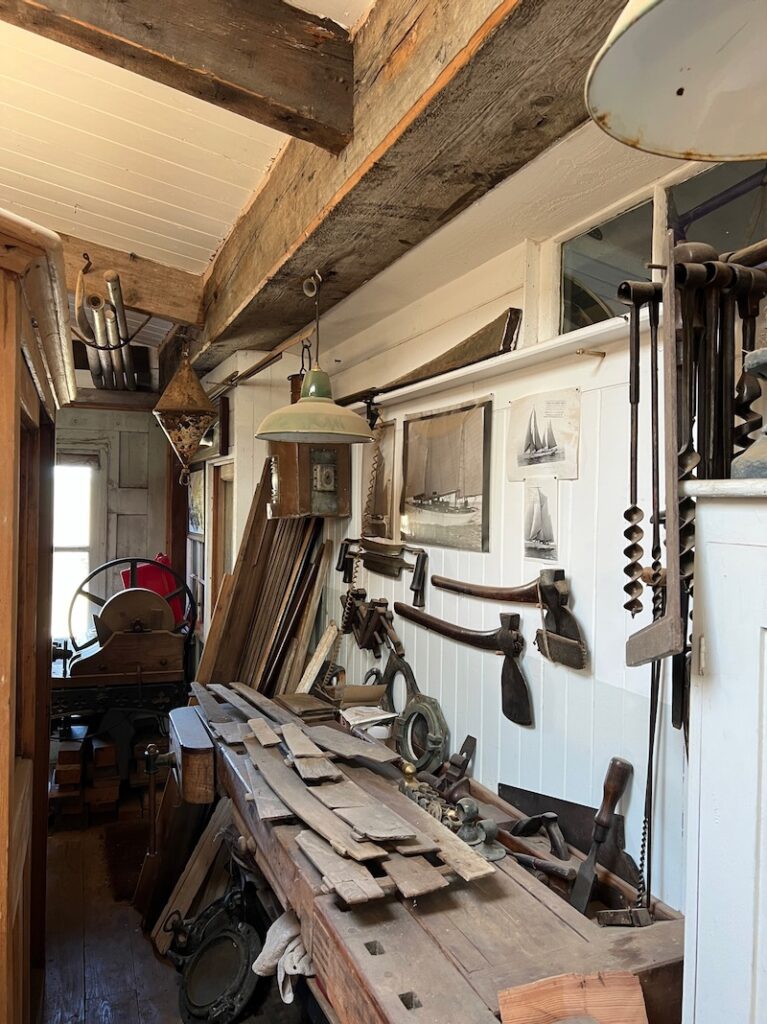
Workbench . ‘These are hand tools I got in America and Canada and the bottom boards of a dingy that will go on the fire once I’ve remade those’
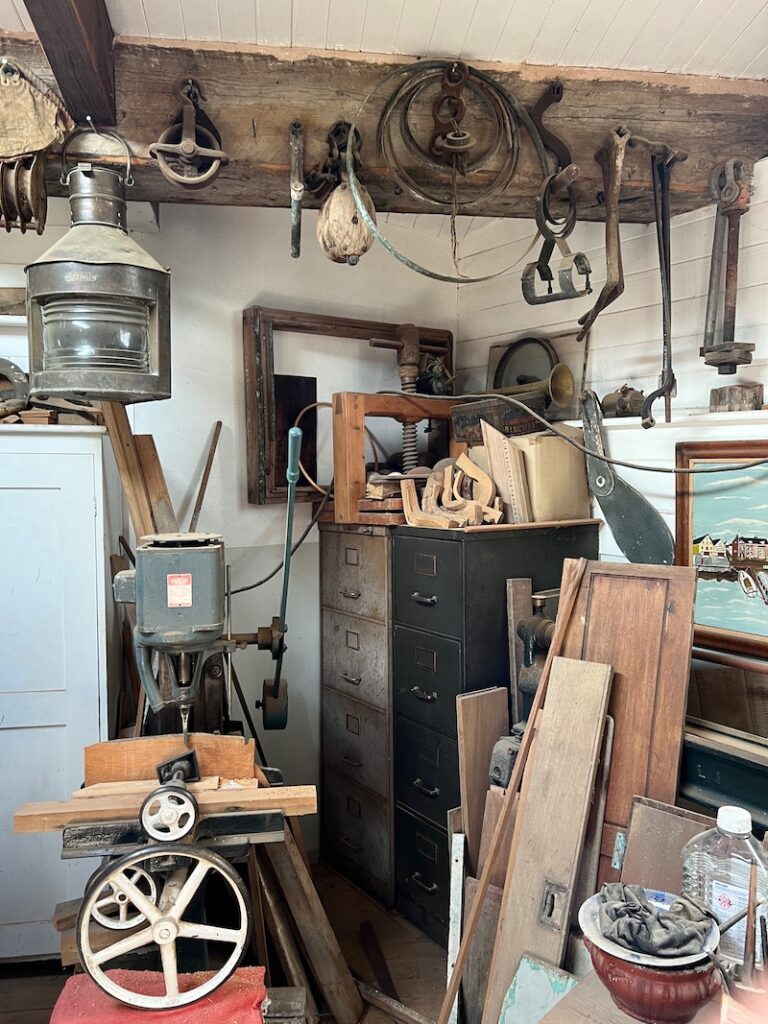
‘That’s a morticing machine that’s been changed to a circulating drill that makes square holes. A ship’s lantern above, from an antique shop in Bridport when I was teaching at the Makepeace School in 1980’
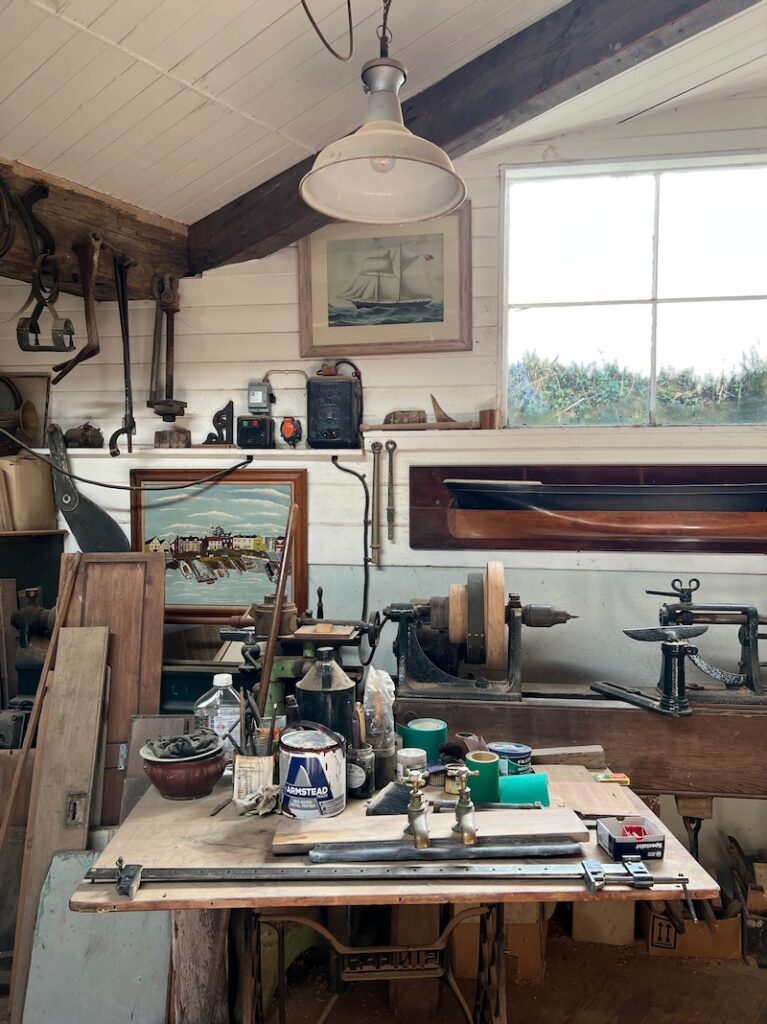
‘That’s a half model of an iron ship from the 1860s which I got after an auction – where it didn’t sell because it had a square cut out hole in it, I made a new piece’
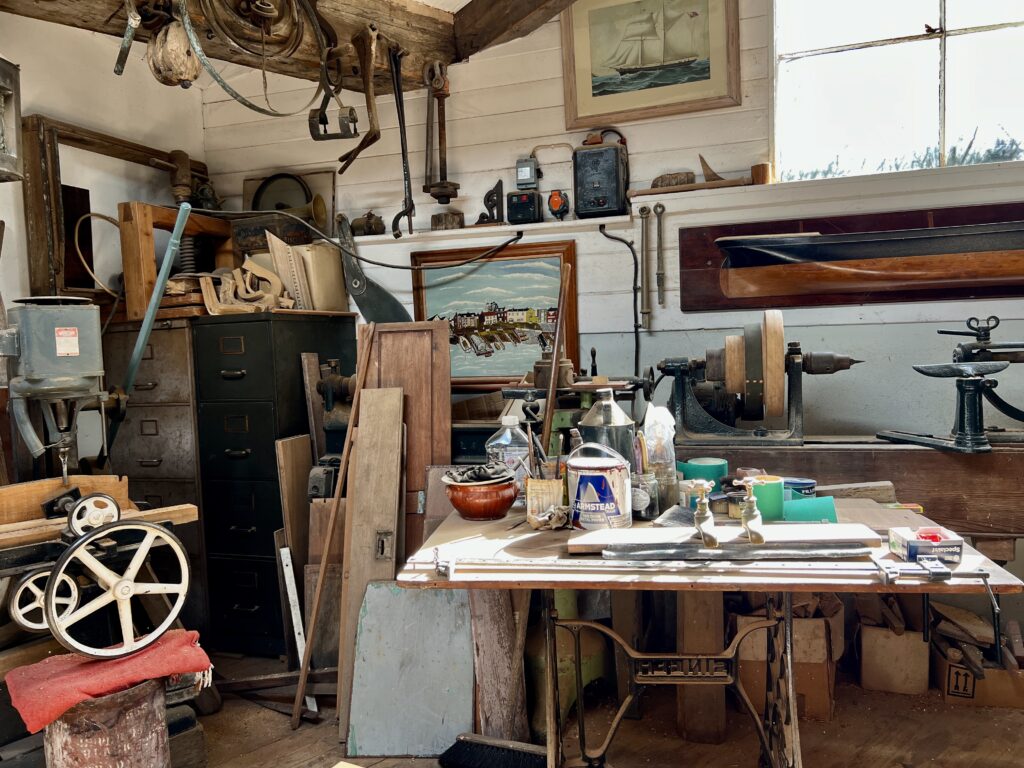
‘I’ve never had the money to buy at the top end of the market, I’ve always repaired and restored’
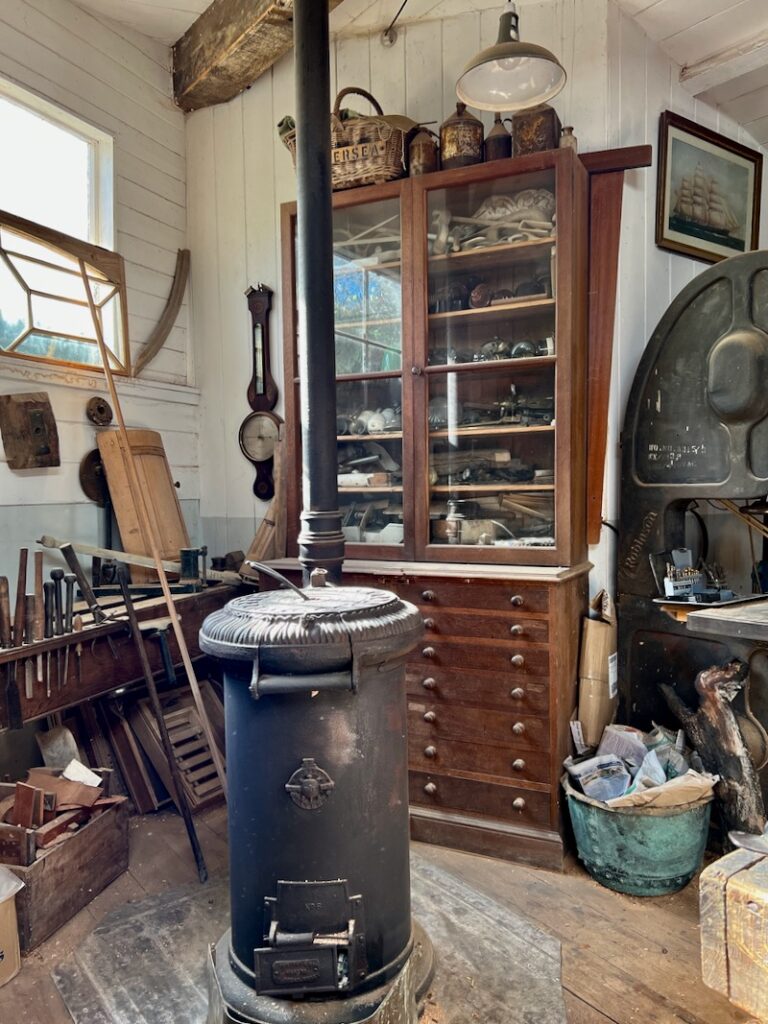
‘This big tortoise [stove]? Ive got about 10, we had to rebuild the cylinder. I’ve got an engineer in Helston who makes up the cylinders. It’s got an interior of clay brick which keeps the heat, they were made from late Victorian times onwards. That window we found in a reclamation yard, he gave it to us for a tenner ,I reglazed it all with crown glass’
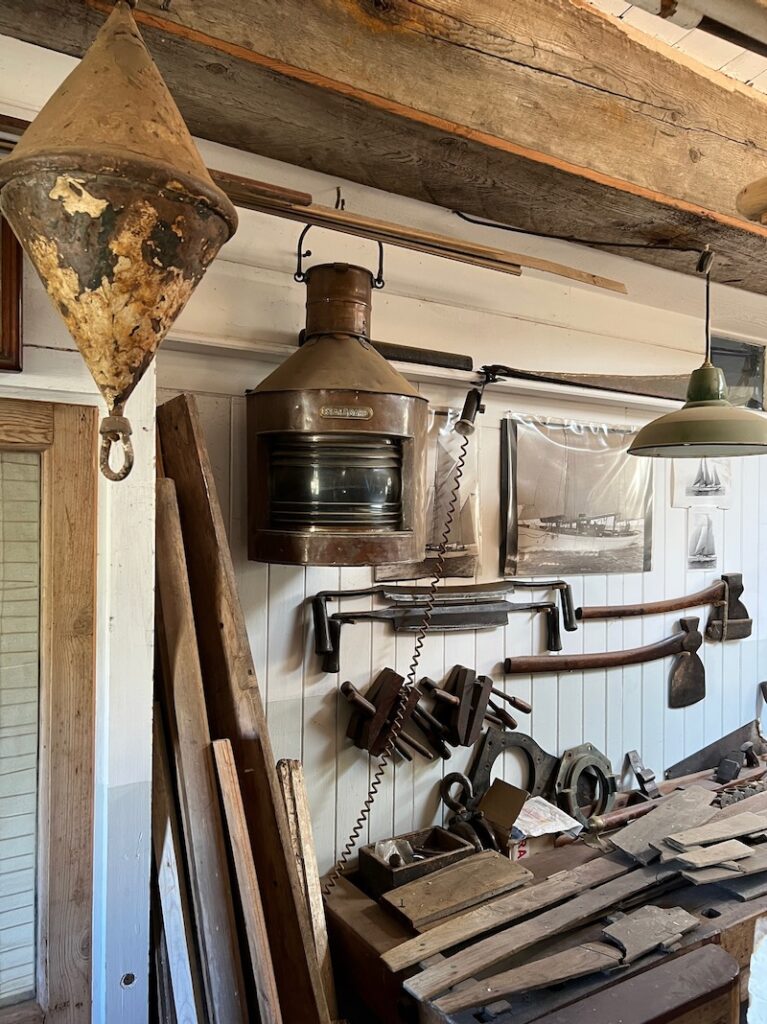
‘That’s a steel buoy , made of thick steel, it floats because of the air inside it. ‘
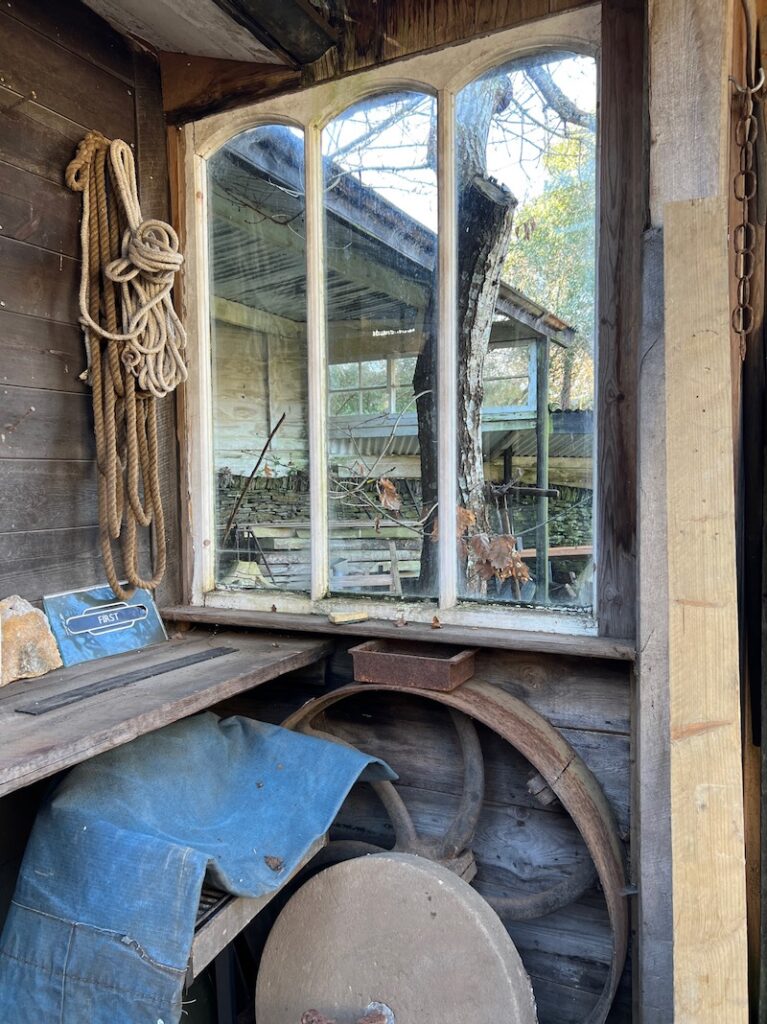
‘This is the stone carving room, I drew it all out and built it built from scrap, A wonderful wheel for driving machinery, shafting driven by leather belts with a steam engine’
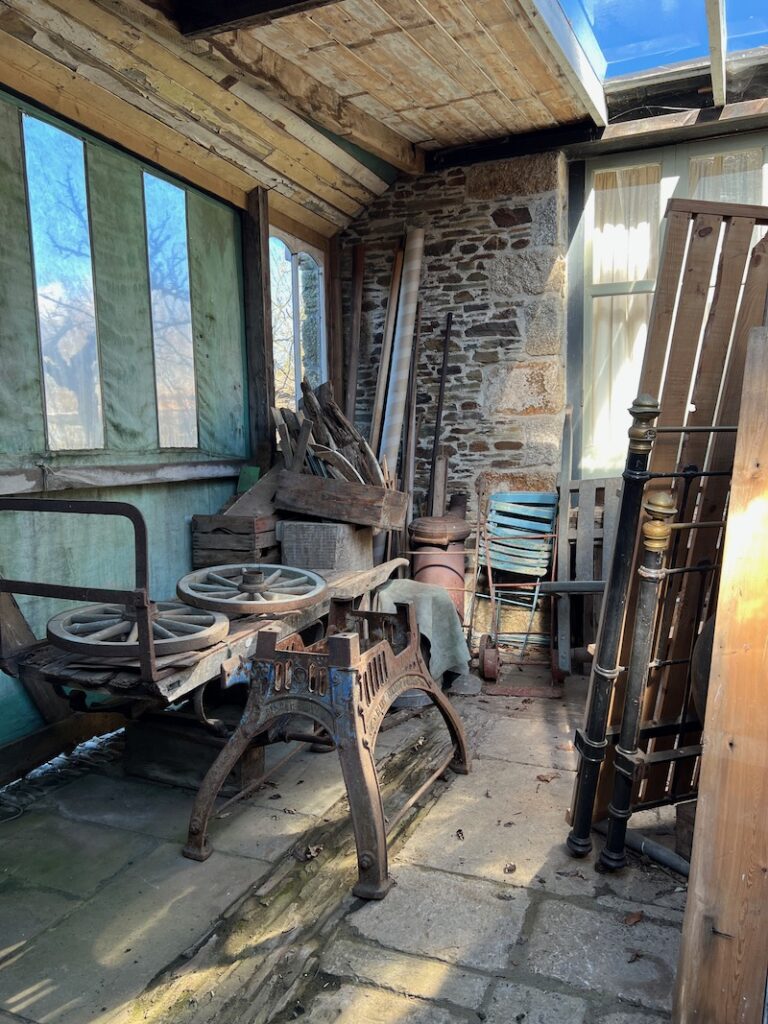
‘That was on my neighbours bonfire – it’s the base of a farm machine, a chaff cutter or something’
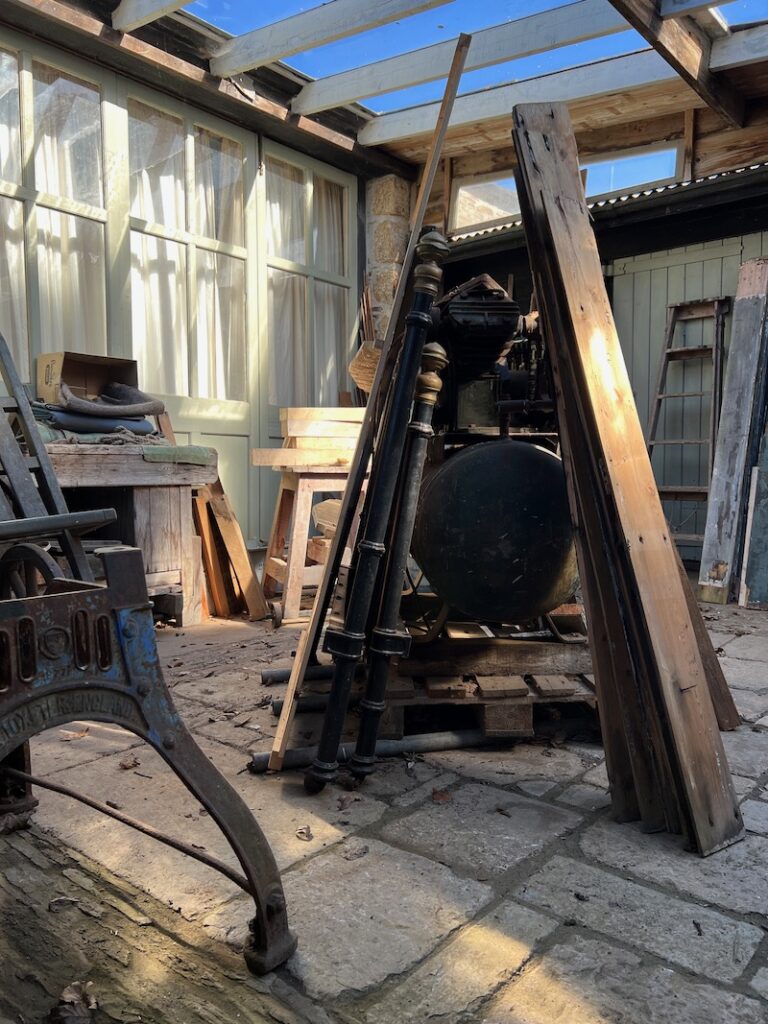
‘A bit of a bed and an air compressor’
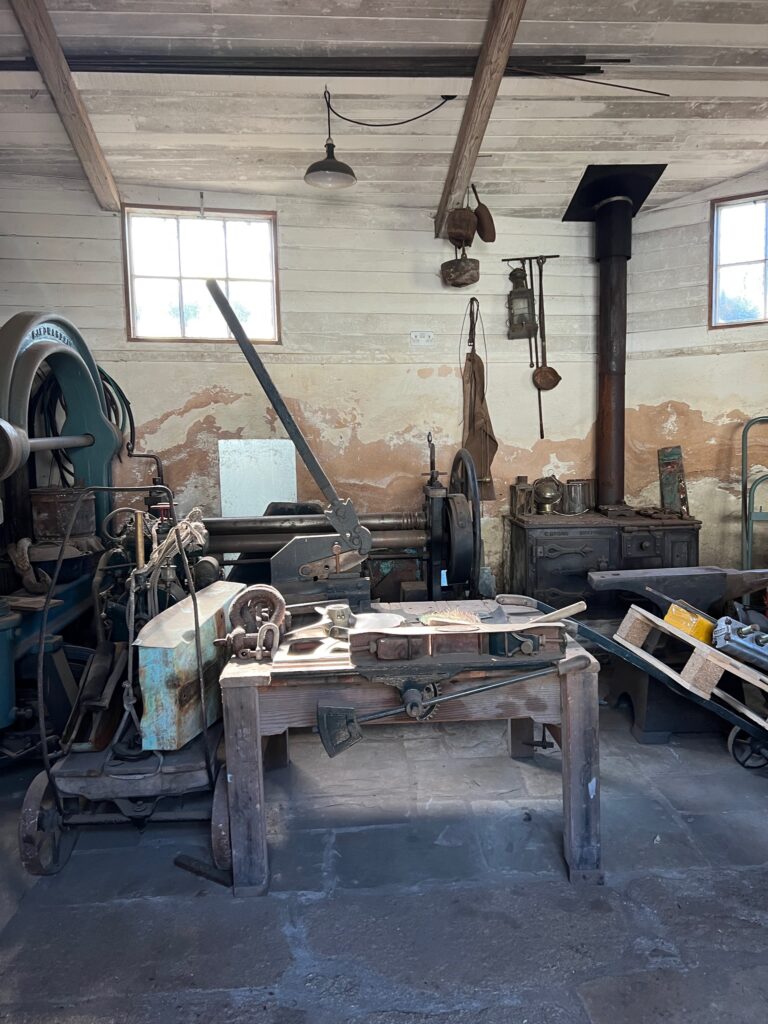
‘A cooking range for heating up metal in the metal working shop. I put the floor in – its one foot thick granite from demolished Cornish engine houses that was lying all over a field. It was advertised in The West Briton at £10 a ton. I bought 170 tons and got it away in a JCB digger and 17 ten ton lorry loads. I used it all – to build the the slipway below the house where we launch our boats’
‘I had an old Haywain – there was a wheelwright in Colyton in Devon, and I went to see him about restoring the wheels. He had this saw in his workshop from the 1880s, it does everything a modern saw will do. So we did a trade, and I got the saw and a little woodstove. He got the Haywain. he restored it. It’s the one that was used in the film, Far from the Madding Crowd
Tremerlin is their property overlooking the Helford River, including an apartment and an 1880s railway carriage which are both available for holiday rentals, contact Greg at : gregpowlesland@gmail.com
Millions of thanks to Greg Powlesland All photographs copyright bibleofbritishtaste. Excerpts may be used as long as clear links are supplied back to the original authors and content.

Beautiful and thoughtful, inspiring and practical, thank you! for sharing!
Wonderful. Many thanks.
Fabulous beyond belief!! So sensational . Im sick with envy.
What a fascinating insight into one man’s, world, so beautifully maintained and valued. Where each item shown is respected and useful.
Thank you for sharing this wonderful space.
Wow , so much history and so many stories. Absolutely fascinating and truly inspiring. Thank you for this.
These tools and artisan ways are so dear, my Father would love to go through your workshop; and you perhaps through his…so many beautiful things to see here.
Thank you.
What expansive minds, what clarity of thought, what direction!
Love every nook and cranny. Thankyou Greg.
verdaderamente hermoso, hizo su lugar en el mundo con cosas simplemente bellas, un artista en todo el sentido de la palabra y asi vive su vida…
Thanks for this tour of your wonderful domain. It’s interesting to learn about these things and a treat for the eye.
Love it!
Thanks so much for sharing What a glorious house and delightful stories
Absolutely wonderful to see all this! What amazing tools, furniture, artwork…a real treat! I need to go there…
Delightful, magical, practical and eccentric…perfect!
Inspiring your home as yourself is full with such wealth of wonderful experiences and knowledge. Much gratitude for sharing both
Love your old machines and the tools , well displayed.
Transported me to a very happy and inspiring place. In memory of Sue from Jersey.Thank you
Amazing display of things you love and want to work with. It reminds of me in so many ways, but I wish I have talents you have to make things for use and beauty. I just realized that I left a comment few months ago but shows what catches my eye. I love it. Cheers
Amazing display of things you love and want to work with. It reminds of me in so many ways, but I wish I have talents you have to make things for use and beauty. I just realized that I left a comment few months ago but shows what catches my eye. I love it. Cheers